The Greatest Meeting of Land and Sea was entrusted to a pair of amateur golfers with no design experience.
Jack Neville and Douglas Grant designed the iconic figure-eight layout originally known as Del Monte’s Second Course, guided by a simple philosophy:
“It was all there in plain sight,” Neville admitted. “The big thing, naturally, was to get in as many holes as possible along the bay. Years before it was built, I could see this place as a golf links. Nature had intended it to be nothing else.”
Pebble Beach Golf Links officially opened for play on Feb. 22, 1919. A gathering of 50 players competed in the opening tournament, with each golfer committing to a “golfer’s oath” around a cherry tree on George Washington’s Birthday. The San Francisco Examiner used the oath for its headline: ‘We Pledge Ourselves by Our Faith in the Cherry Tree to Turn in Honest Score Cards.’
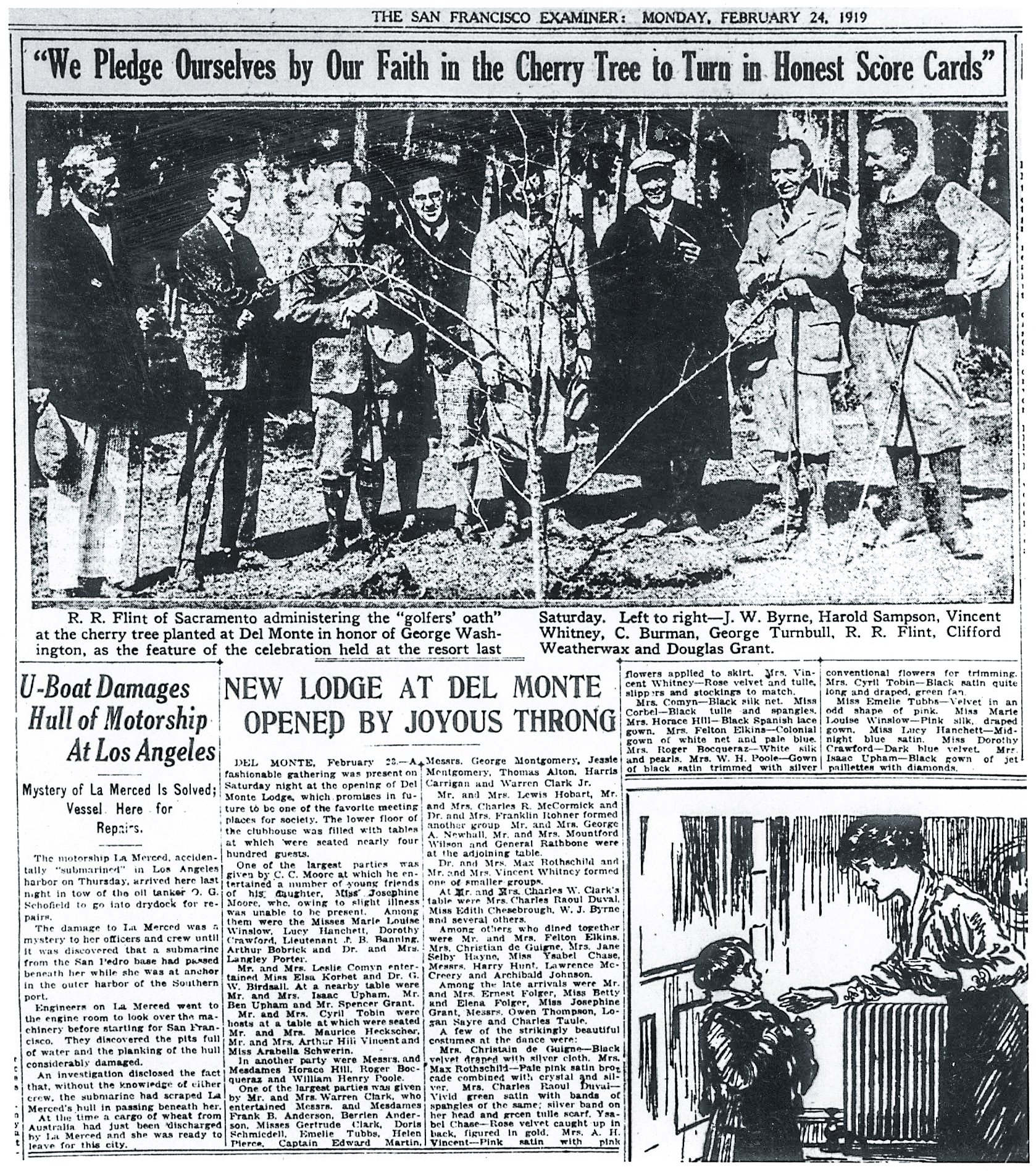
Grant set the course record at 80, a 7-over score on the par-73 layout that measured 6,020 yards. Both Grant and Neville were acclaimed amateur golfers — they even chose to design Pebble Beach for free to preserve their amateur status.
A year after Pebble Beach opened, it joined Del Monte’s First Course (still in Monterey today) as the host for the California State Amateur. Already a three-time State Amateur champion, Neville went on to win two more titles on the course he built. (Grant was a three-time medalist, and won the 1918 title, too.)
The golf on Feb. 22 was actually overshadowed by the opening of the Del Monte Lodge — now known as The Lodge at Pebble Beach. The San Francisco Examiner gushed about a 400-guest gathering that evening, dedicating its story to who attended, and what they wore:
“A fashionable gathering was present on Saturday night at the opening of Del Monte Lodge, which promises in future to be one of the favorite meeting places for society.”
Here is a look at that favorite meeting place in 1919:
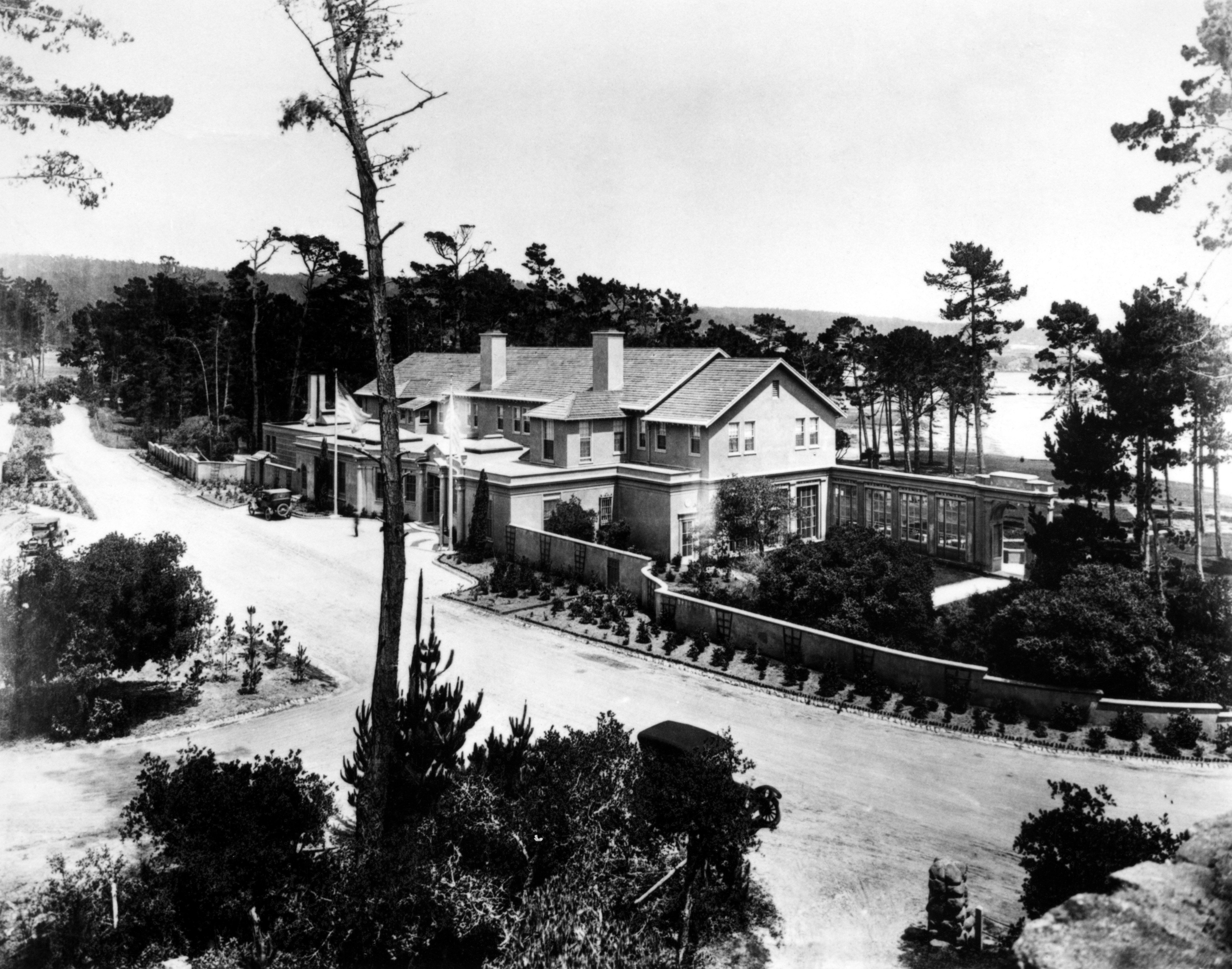
And here it is today:
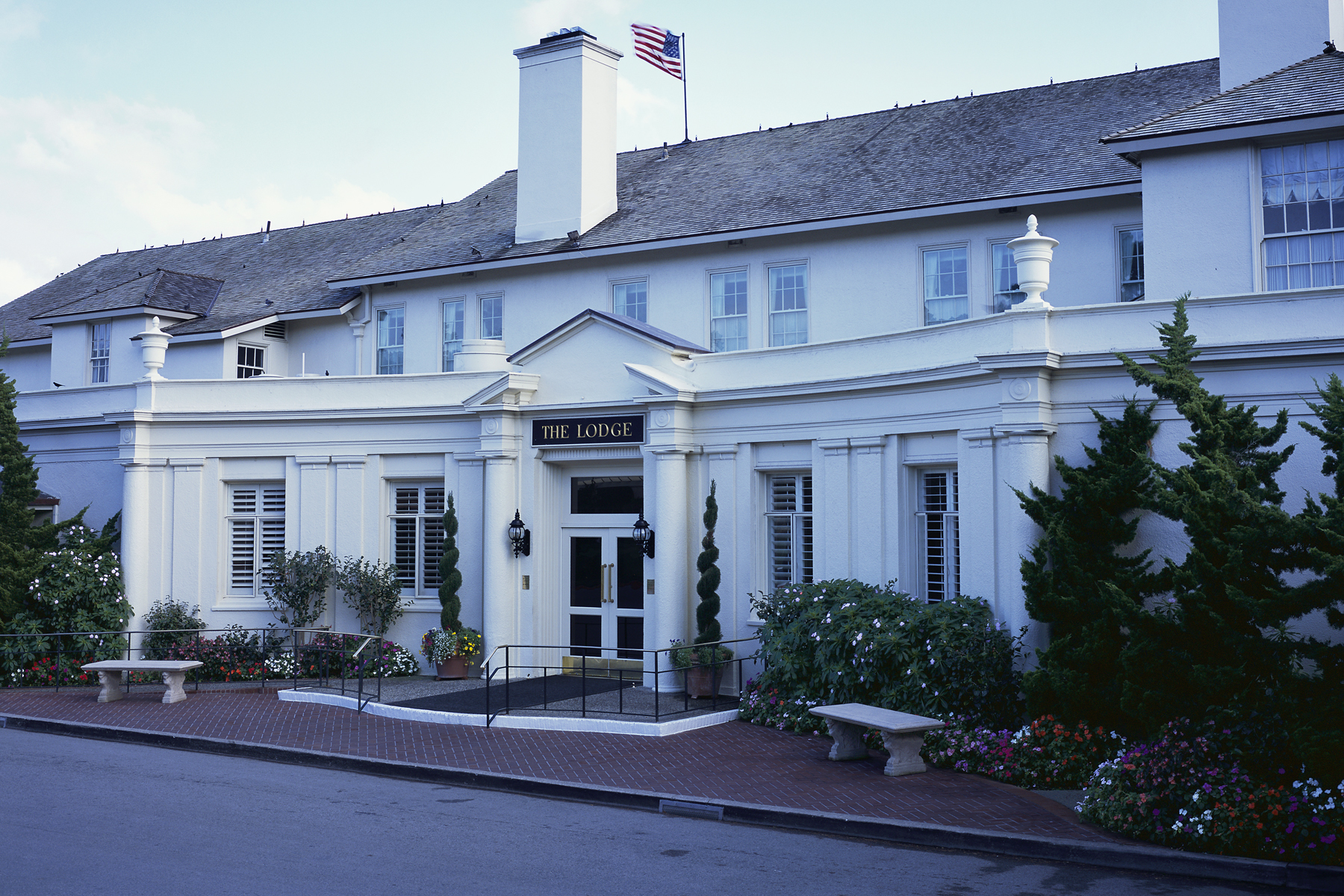
What else has changed over the last 100 years at Pebble Beach? Let’s take a look around:
THE FIRST HOLE
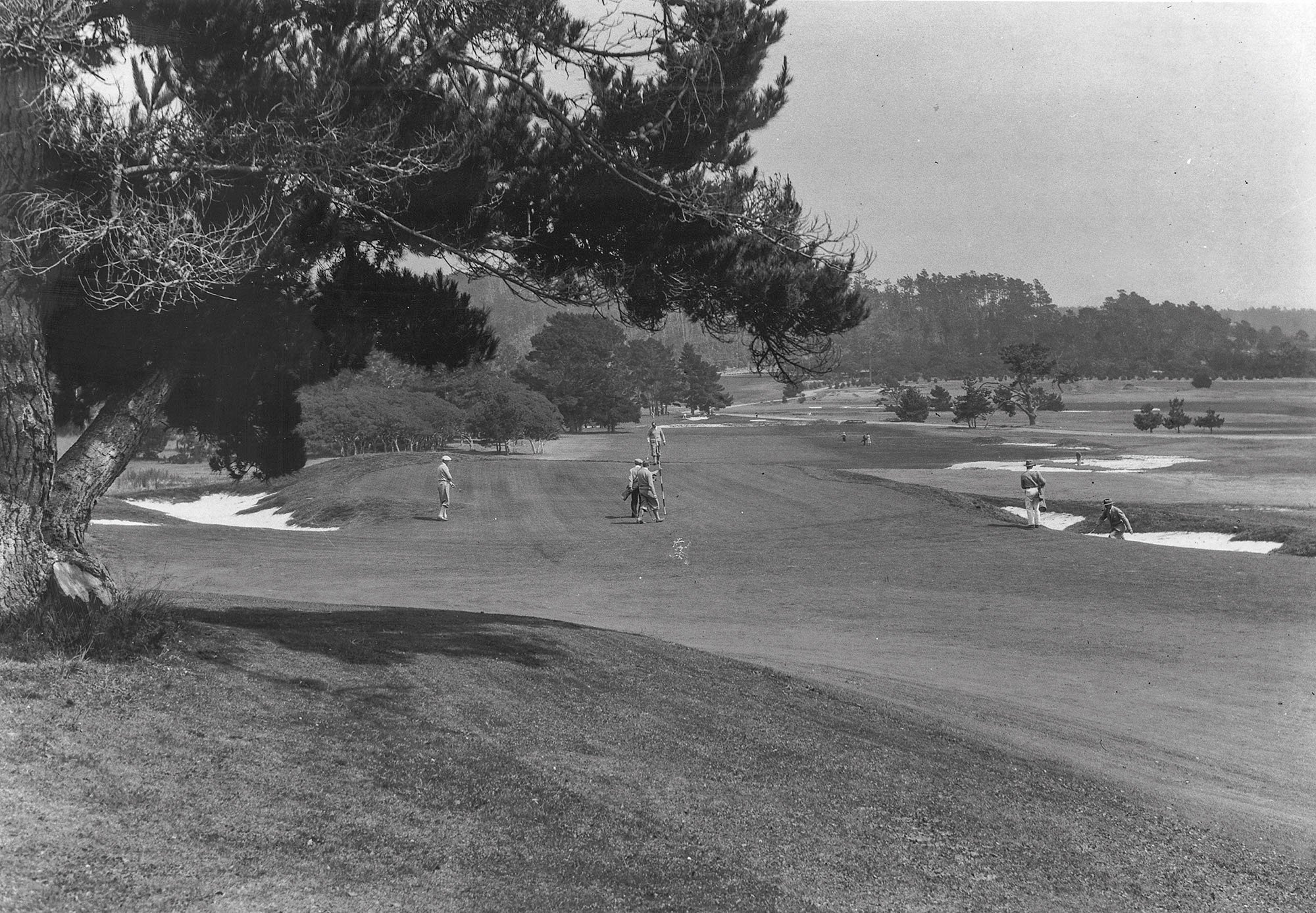
This photo from the late 1920s led to the restoration of the left greenside bunker prior to the 2010 U. S. Open. For many decades it had been grassed over as a swale. You’ll also notice a more visually intimidating cross bunker in the distance on the wide-open second hole. Here’s what this view looks like today:
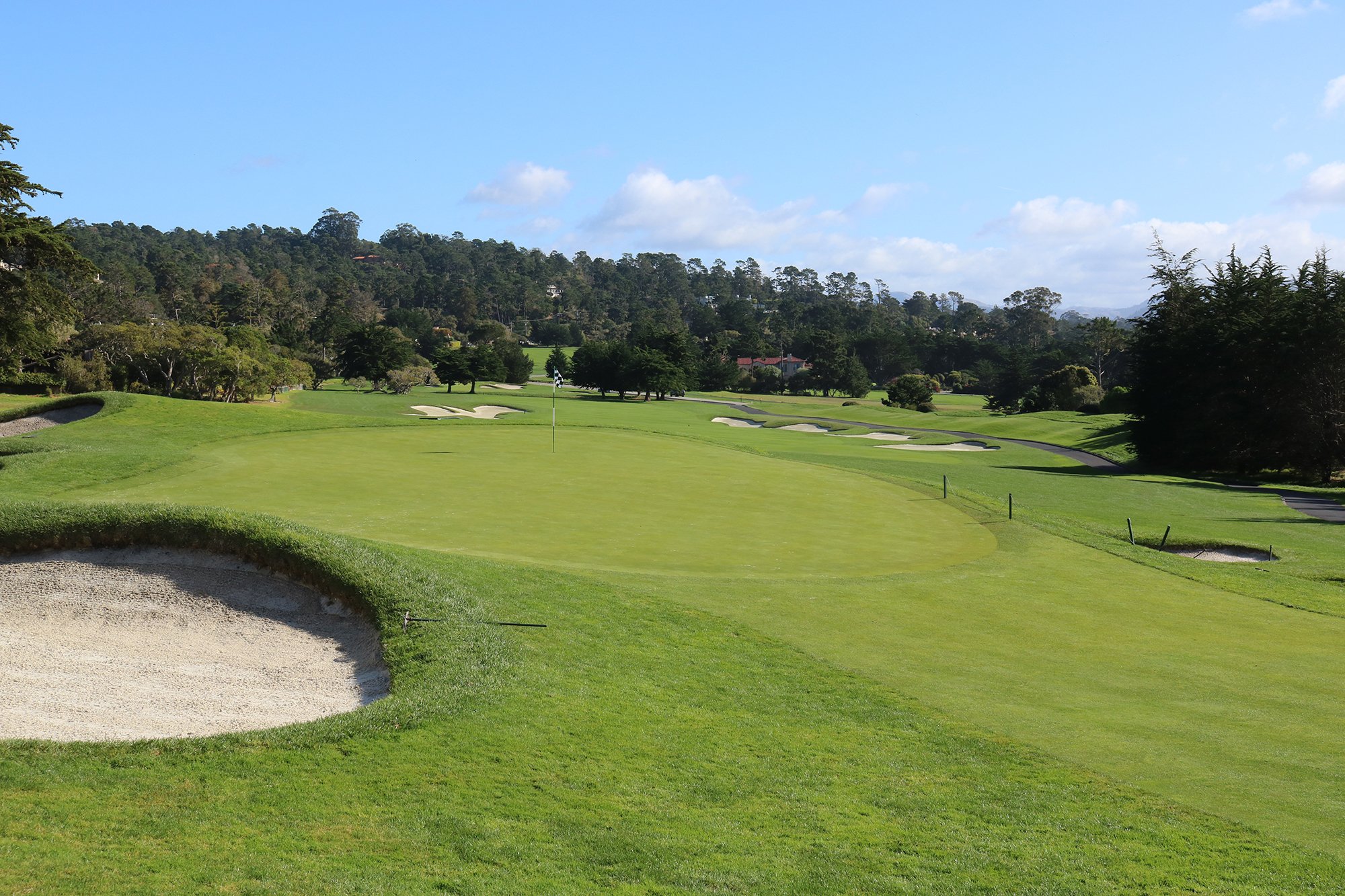
THE THIRD GREEN
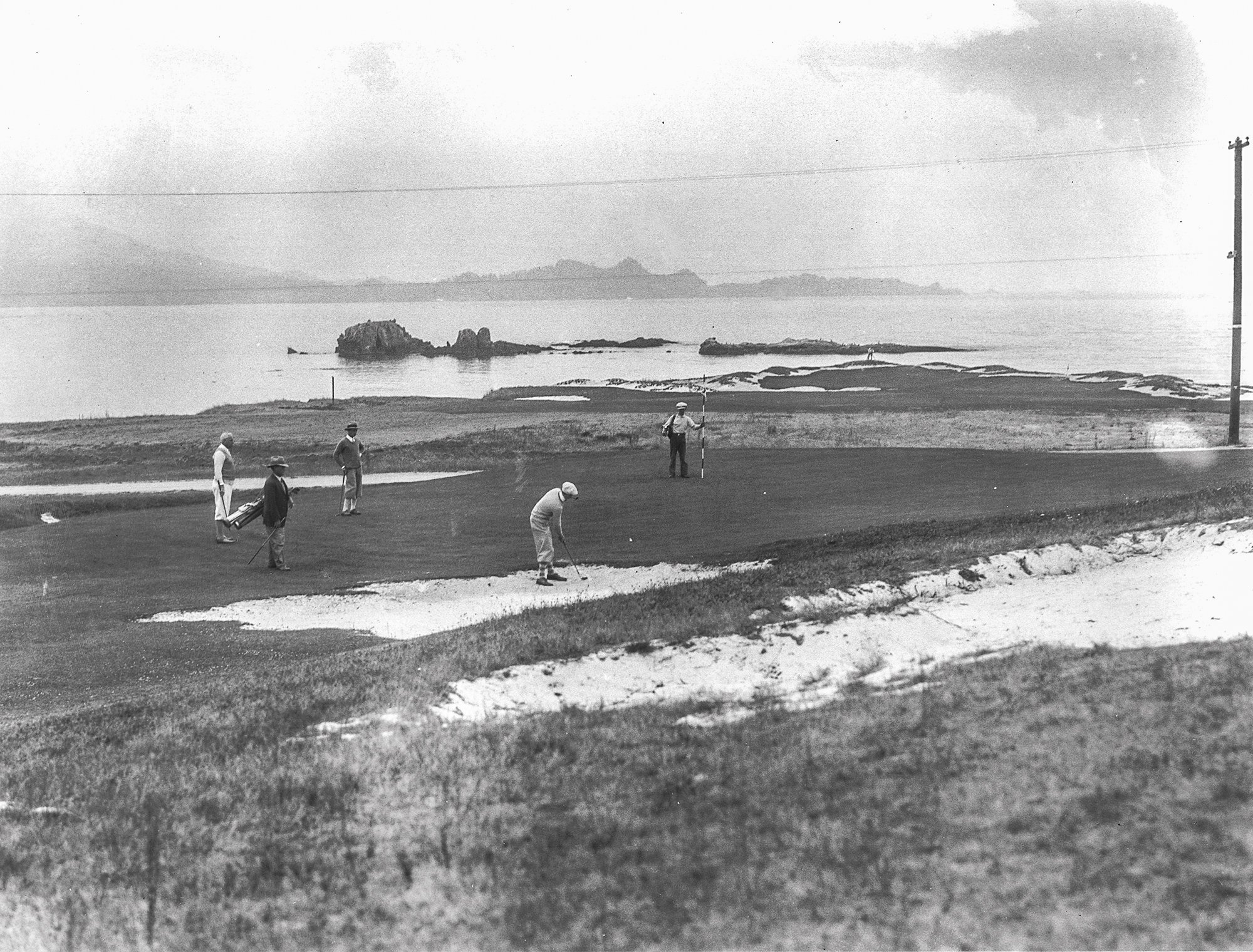
It takes a double-take to recognize this green without the hedges that hide that first ocean view of the round. You can also see the 17th green in the distance of this late 1920s photo.
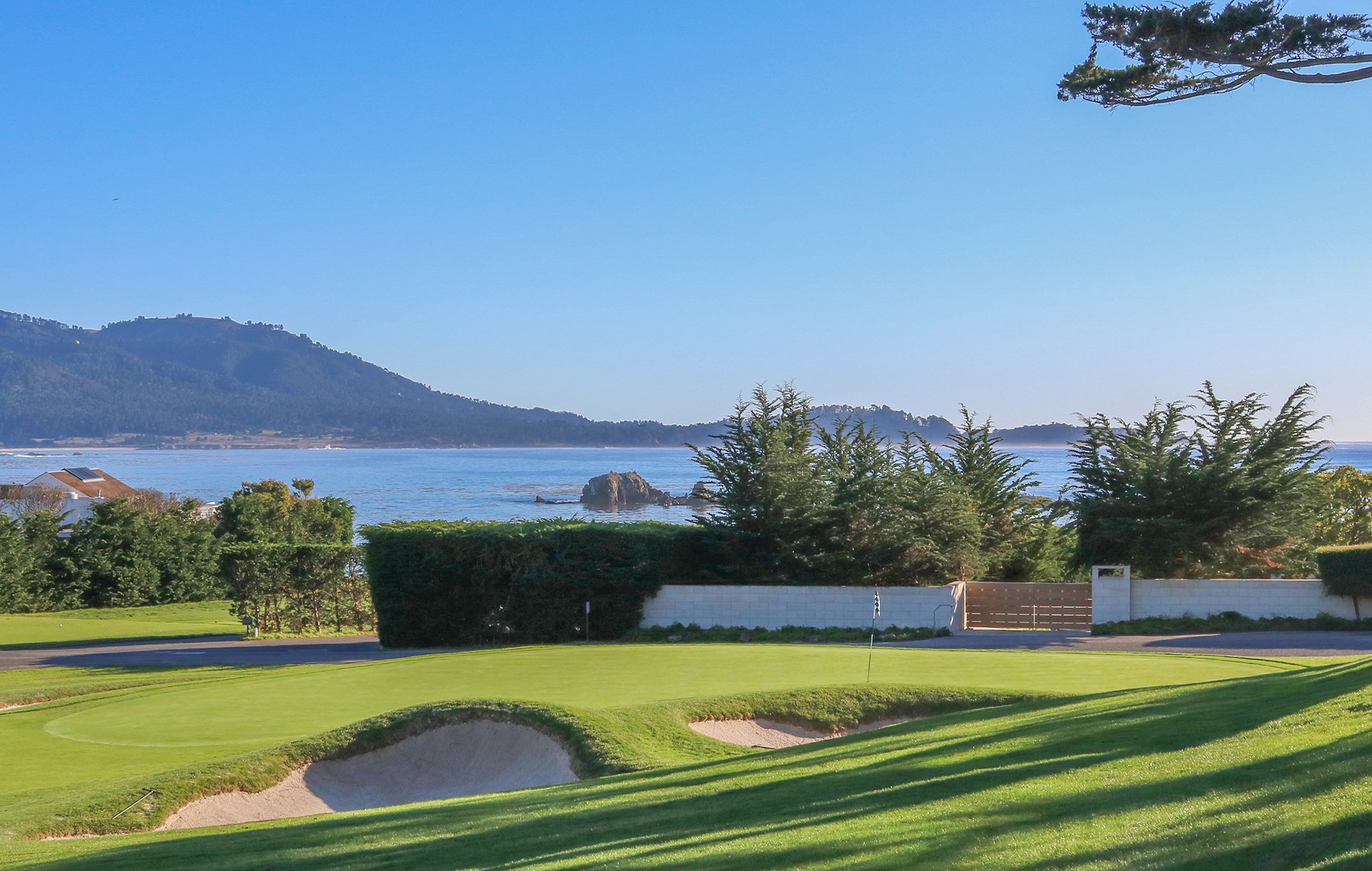
THE FOURTH HOLE
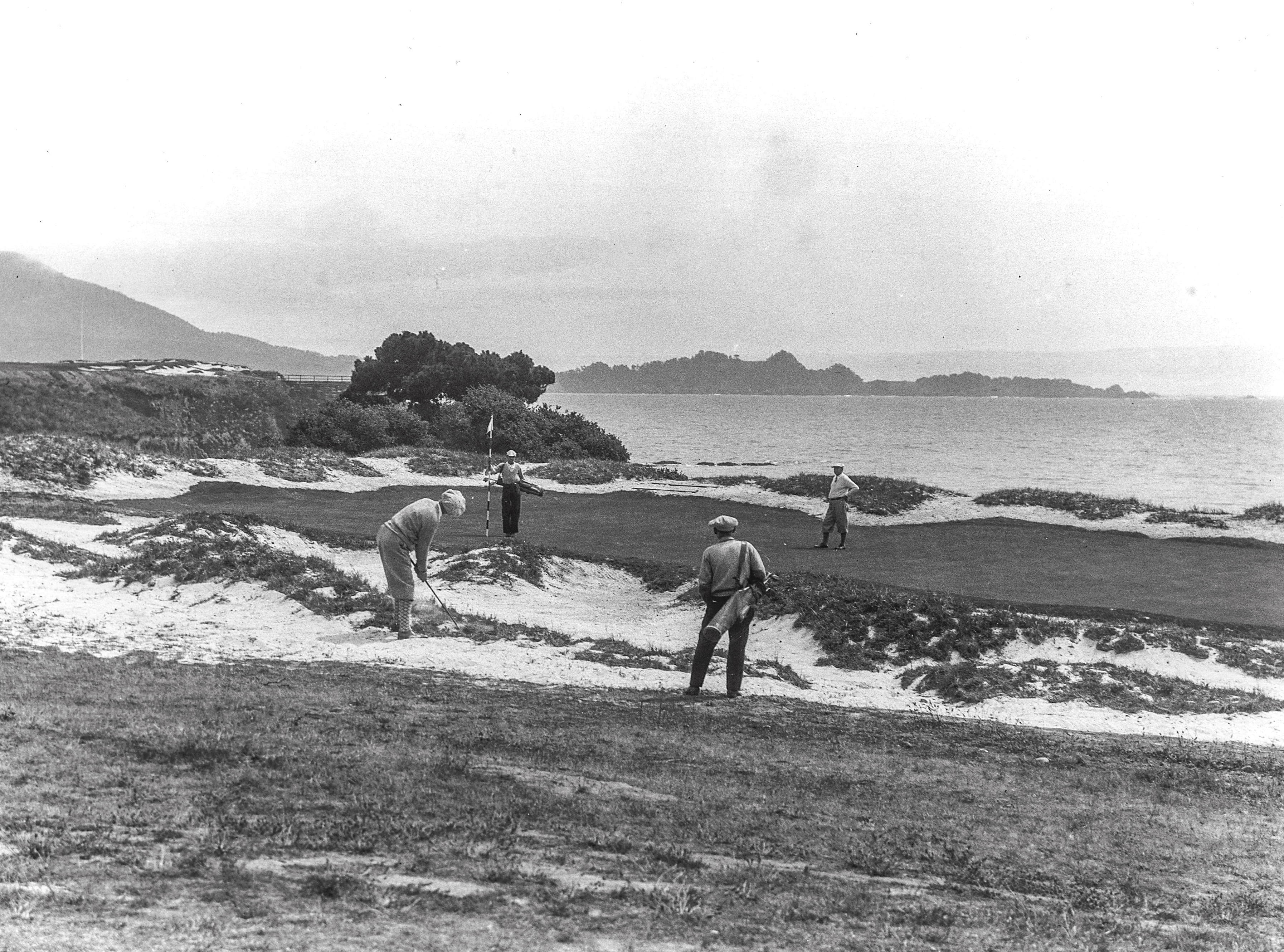
Chandler Egan, who won both the U.S. Amateur and an Olympic Gold Medal for Golf in 1904, is chiefly responsible for the rugged dunes that dotted Pebble Beach in the 1920s. He was brought in by the USGA to touch up Pebble Beach ahead of the 1929 U.S. Amateur. Notice the dunes in the distance at the top of Arrowhead Point ringing the sixth green, too. Here is a similar view today:
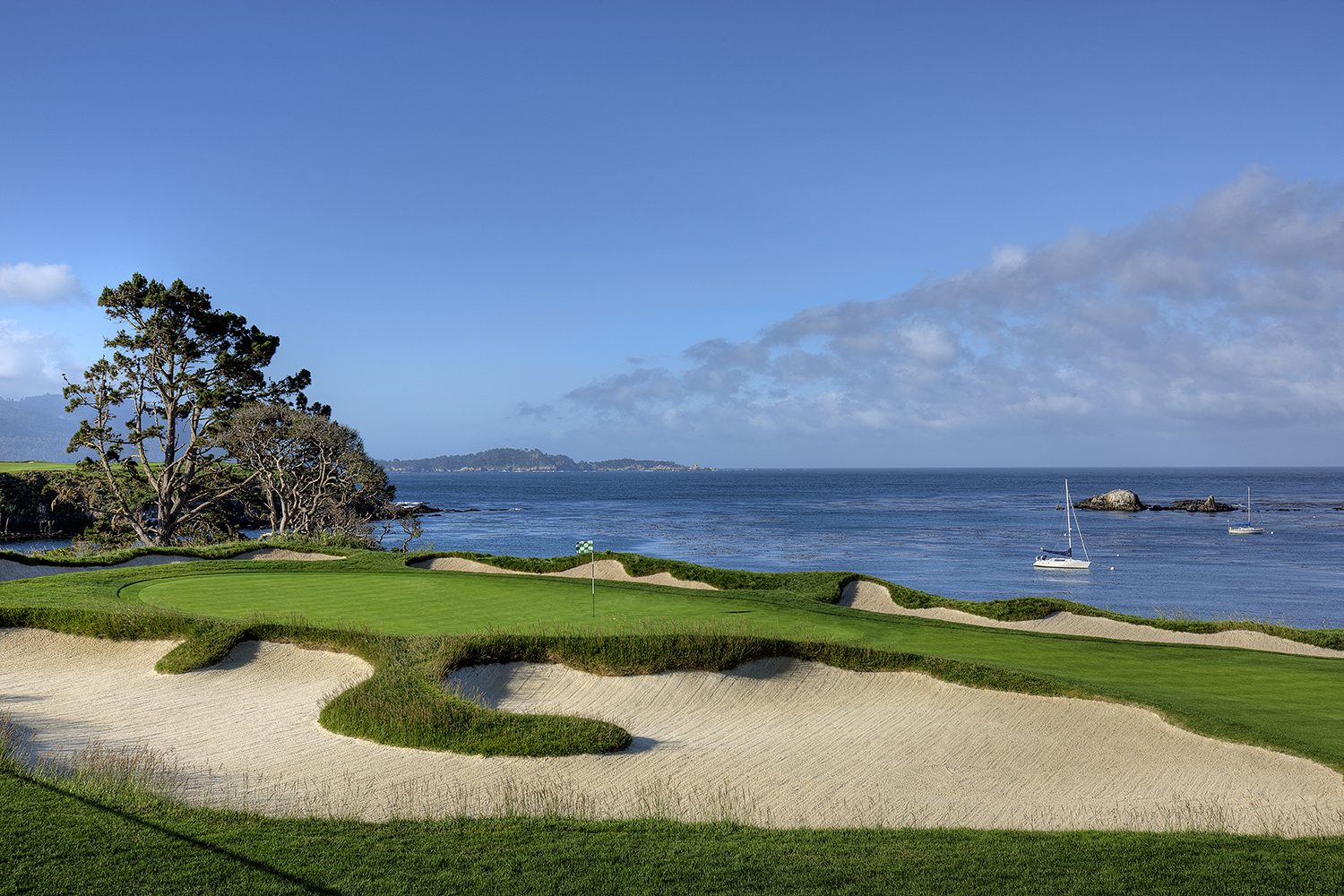
THE FIFTH HOLE
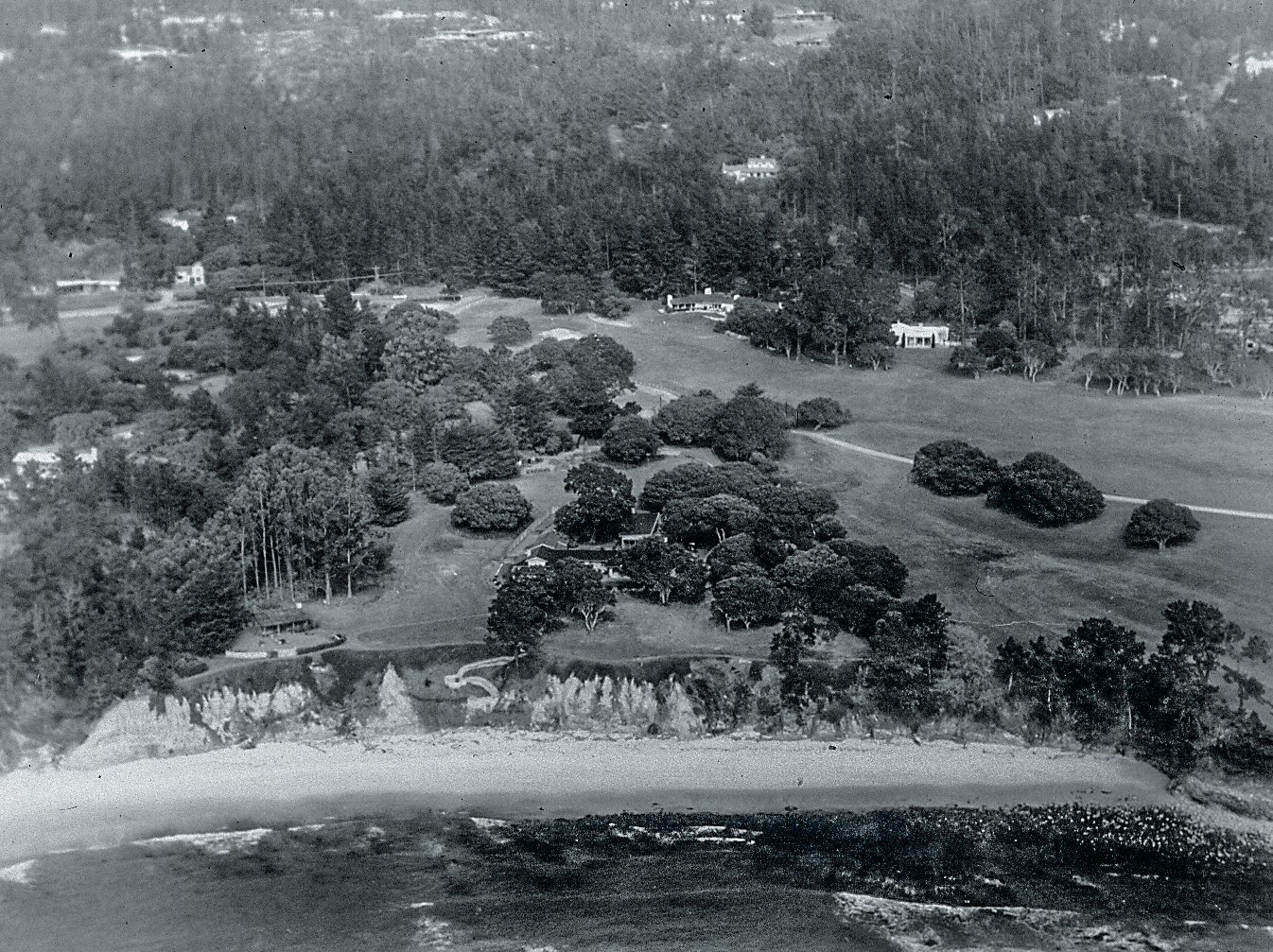
Pebble Beach Resorts Founder Samuel F.B. Morse regrettably sold one lot of oceanfront property before deciding he wanted to build a golf course. That is why until 1998, the fifth hole climbed inland through a through a narrow chute of trees, around a private home. Here’s what the hole looked like during the 1992 U.S. Open:
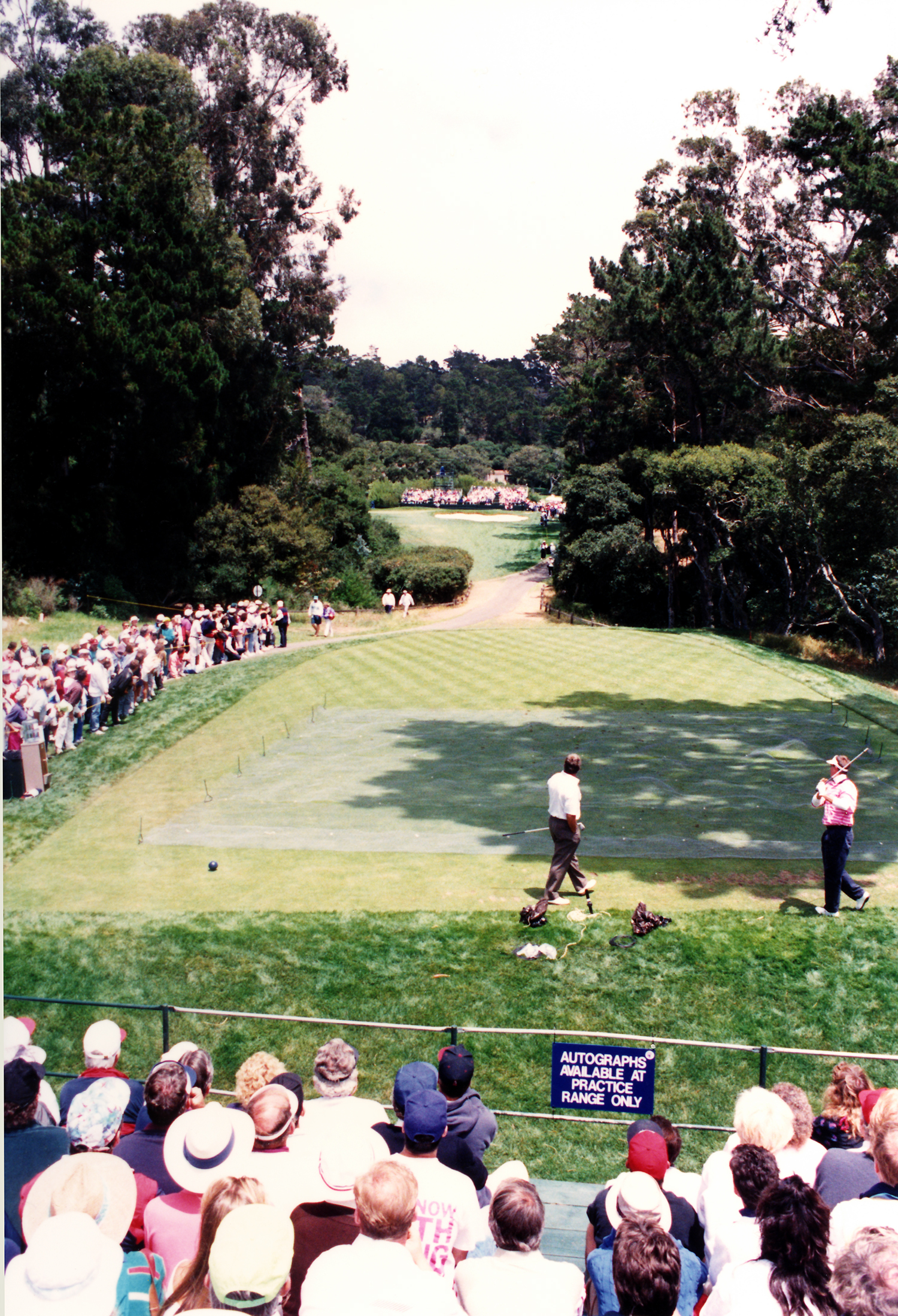
Some eight decades later, the missing oceanfront hole was finally built, completing an unbeatable stretch of seaside golf from Nos. 4-10. Jack Nicklaus ultimately upgraded No. 5 to look like this:
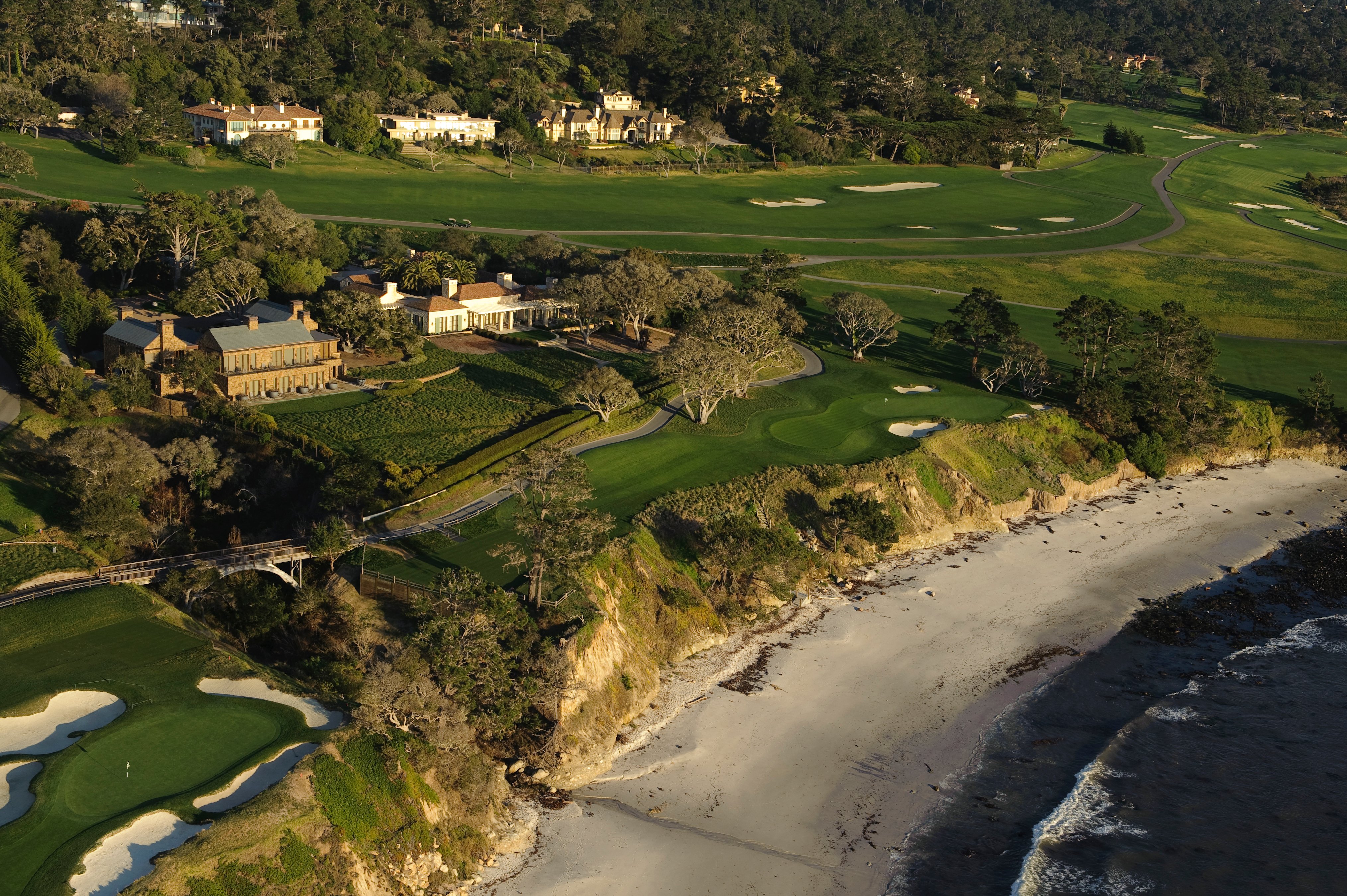
It is interesting to wonder: if this land had been available to Neville and Grant in 1919, would No. 6 still feature a tee box some 150 yards behind the current fifth green? (The sixth tee box was just a short walk from the original fifth green.) How else might Nos. 6-10 have been designed?
THE SIXTH TEE
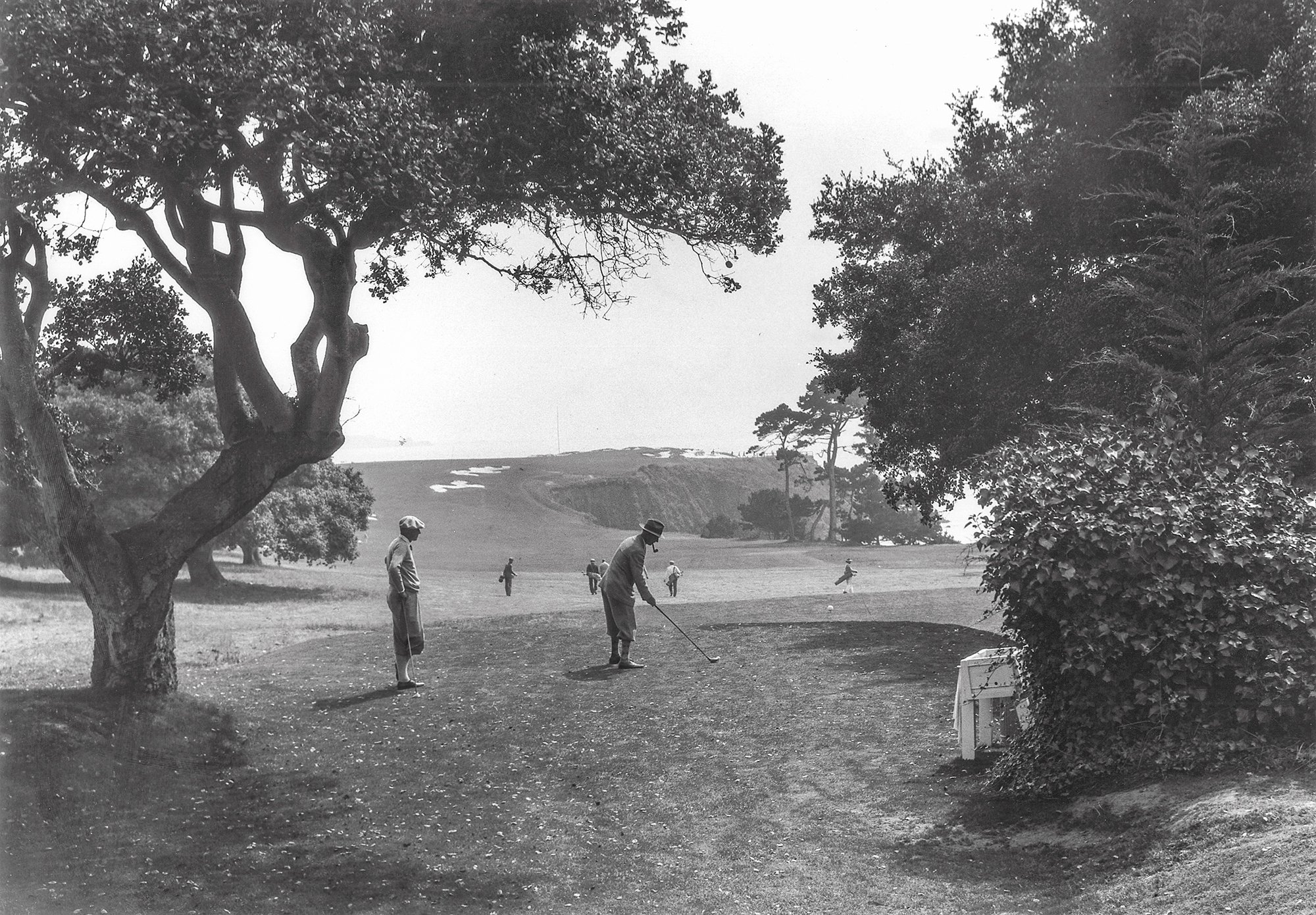
In preparation for the 1929 U.S. Amateur, Egan added his sand dune bunkering around the sixth green, as well as a pair of diagonal bunkers hanging halfway up the hill. (A tree also hides bunkers along the left edge of the fairway.) You can see how the bunkering has shifted over time to narrow the tee shot and impact the layup:
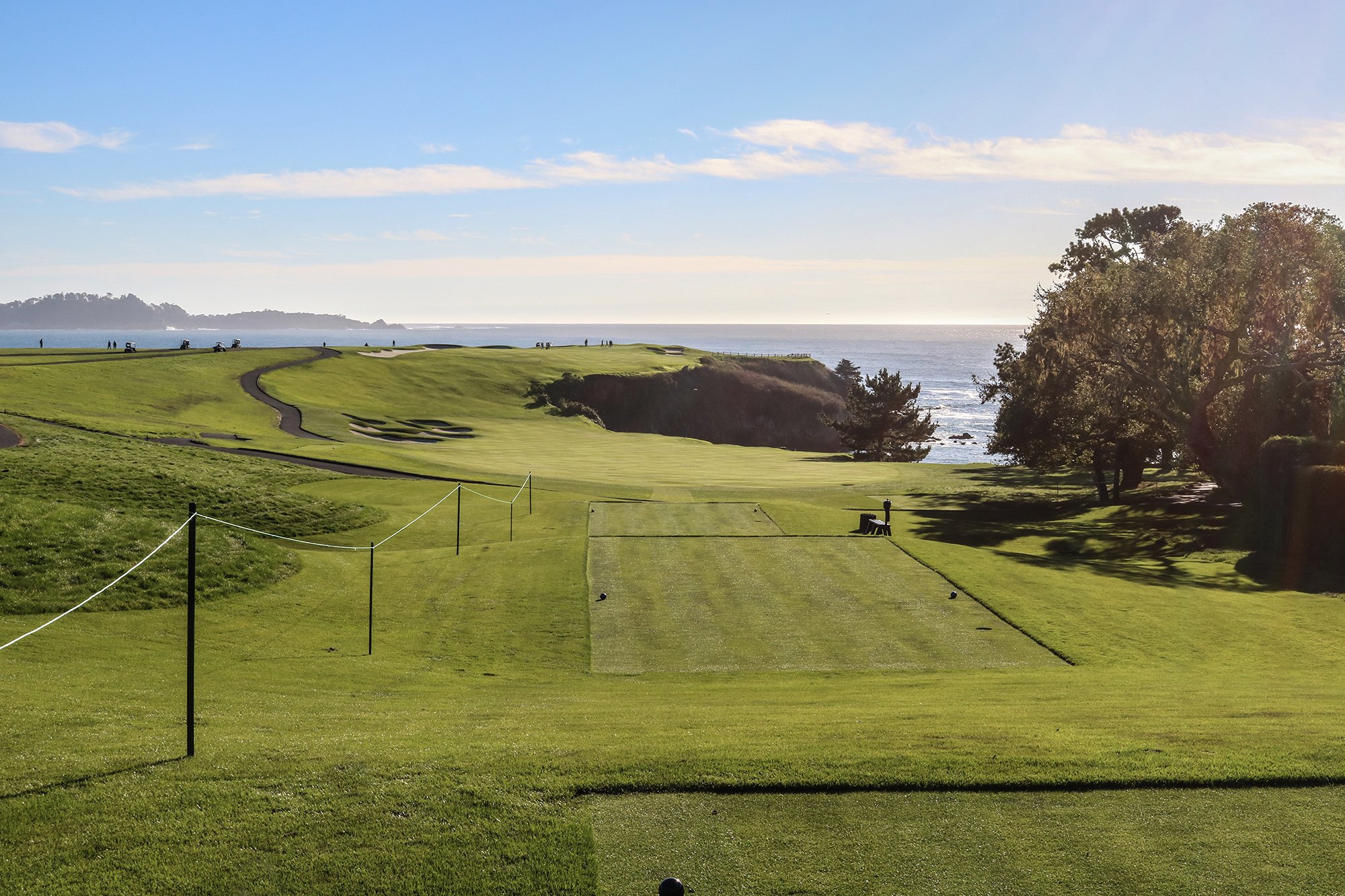
THE SIXTH GREEN
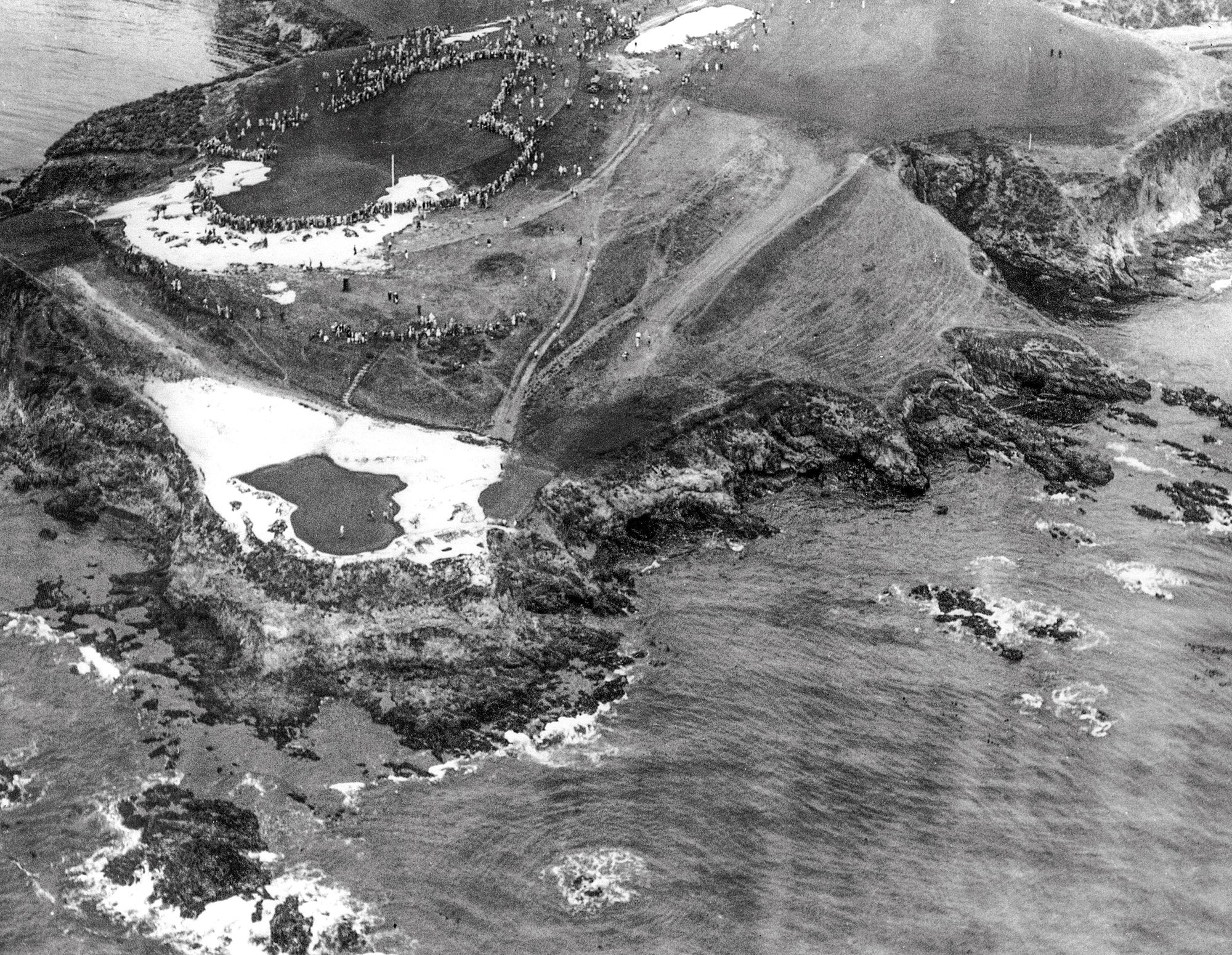
This captivating view showcases Egan’s bunkering from above the sixth and seventh holes during the 1929 U.S. Amateur. Here’s a similar angle today:
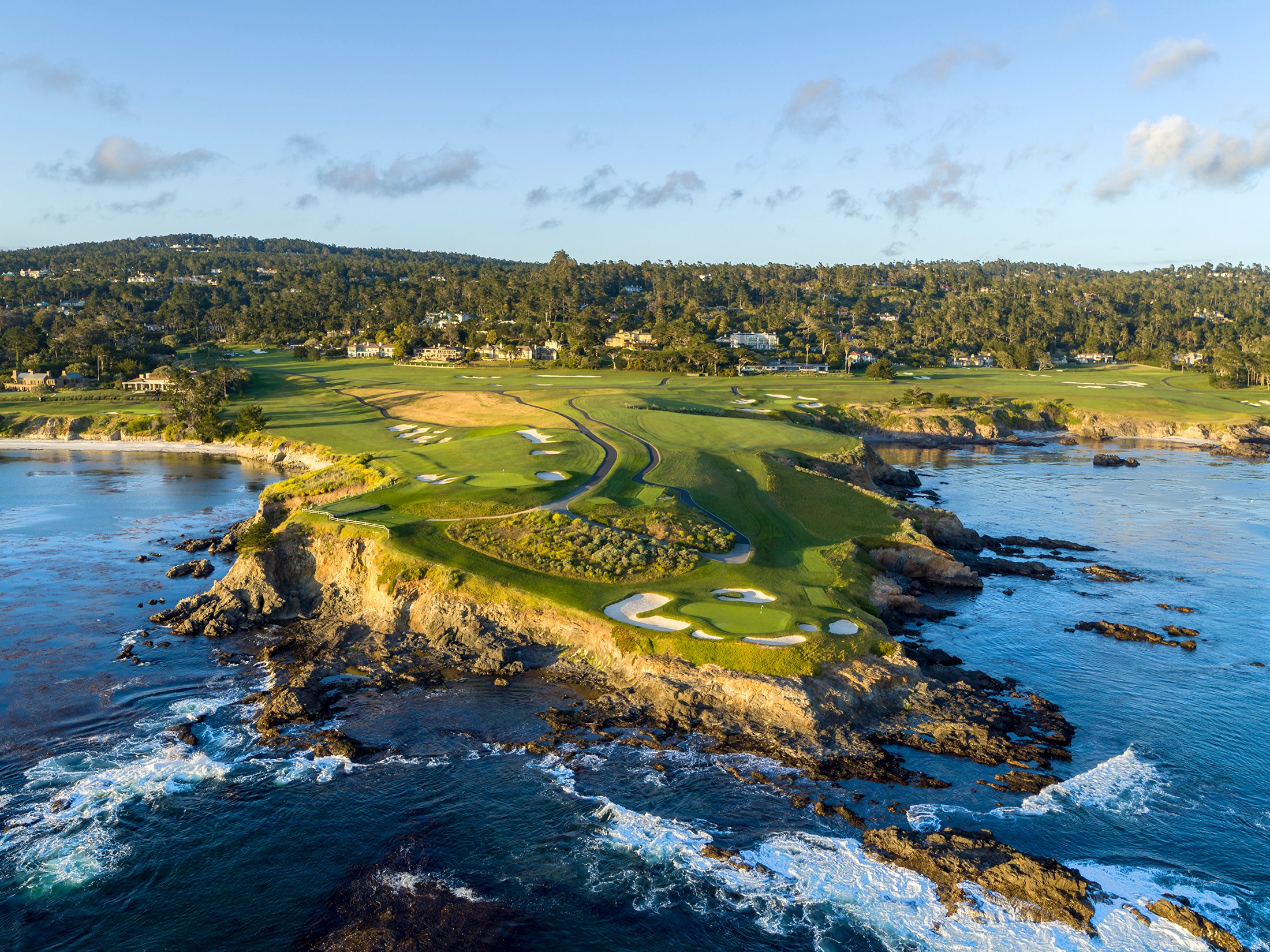
THE SEVENTH HOLE
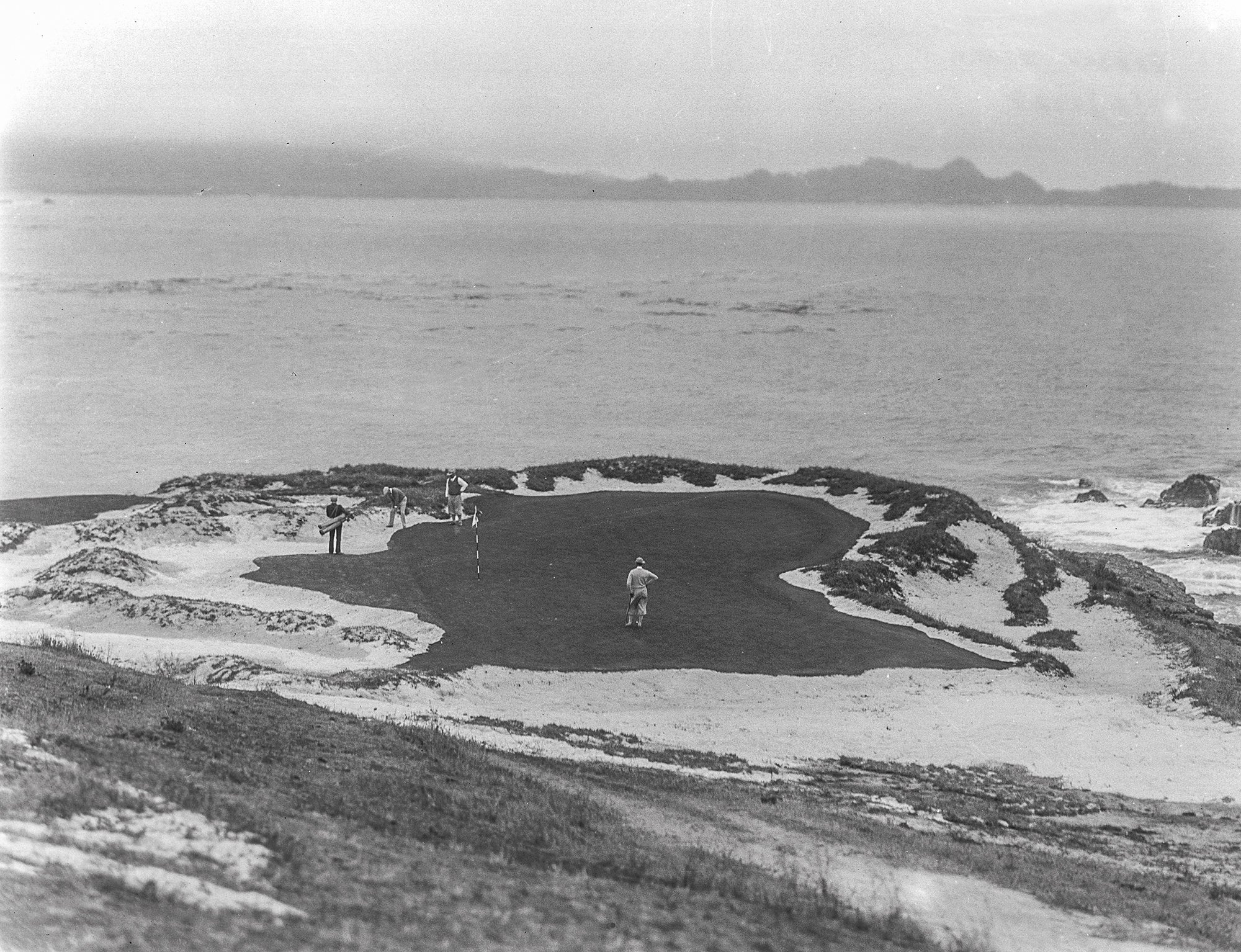
Opinions from golf architects about the seventh hole have varied greatly. Herbert Fowler — who is credited with creating the current 18th hole at Pebble Beach — recommended abandoning it. Jack Nicklaus and Pete Dye admitted they wouldn’t have considered the possibility of a hole here. This was Egan’s take on the hole before the 1929 U.S. Amateur:
“The new green has been placed as close to the ocean as possible. It is irregular in shape, 100 feet long from the front to back and 45 to 50 feet wide. It is completely surrounded by sand dune bunkering.”
Here is that same view today:
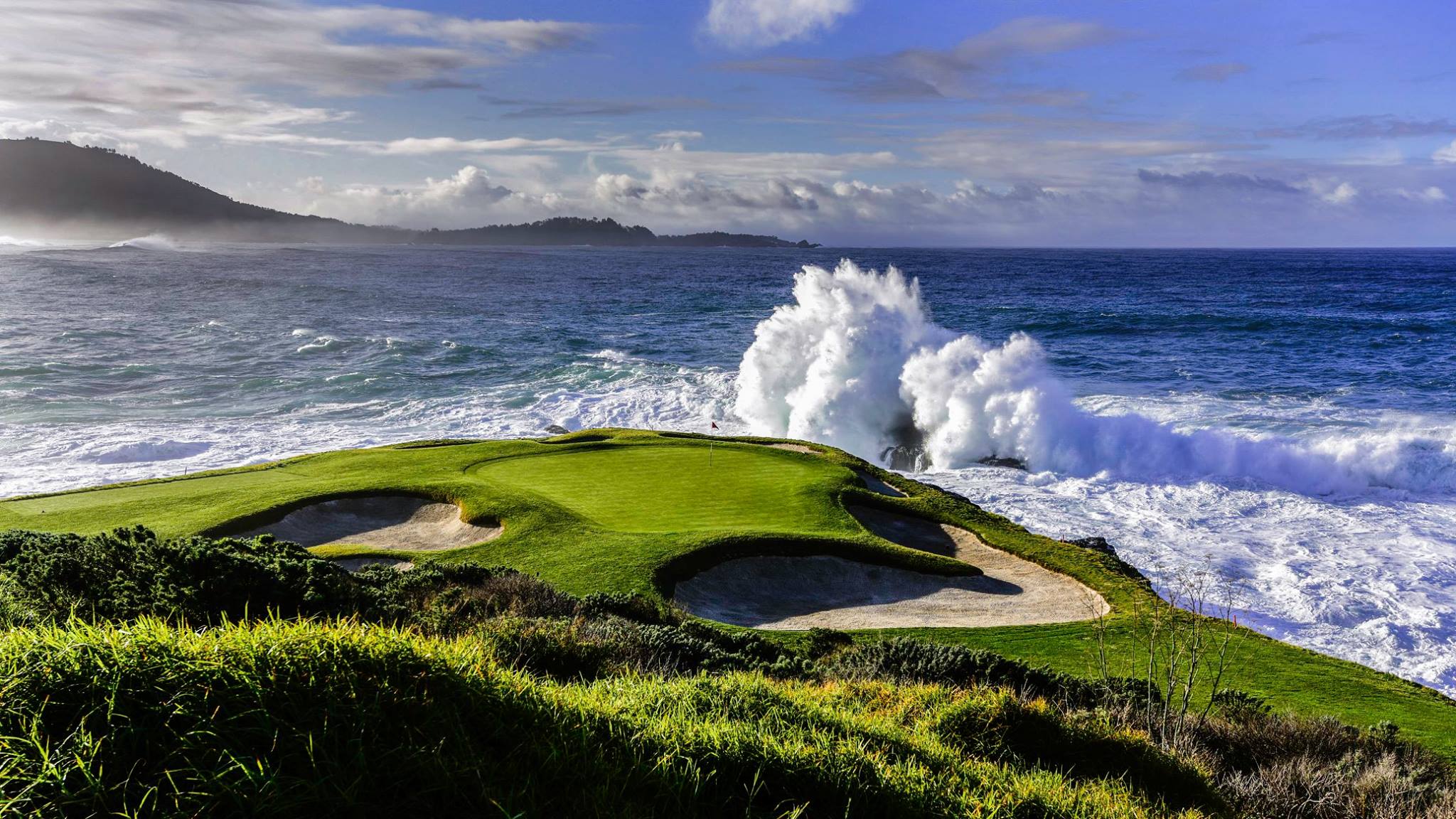
THE EIGHTH HOLE
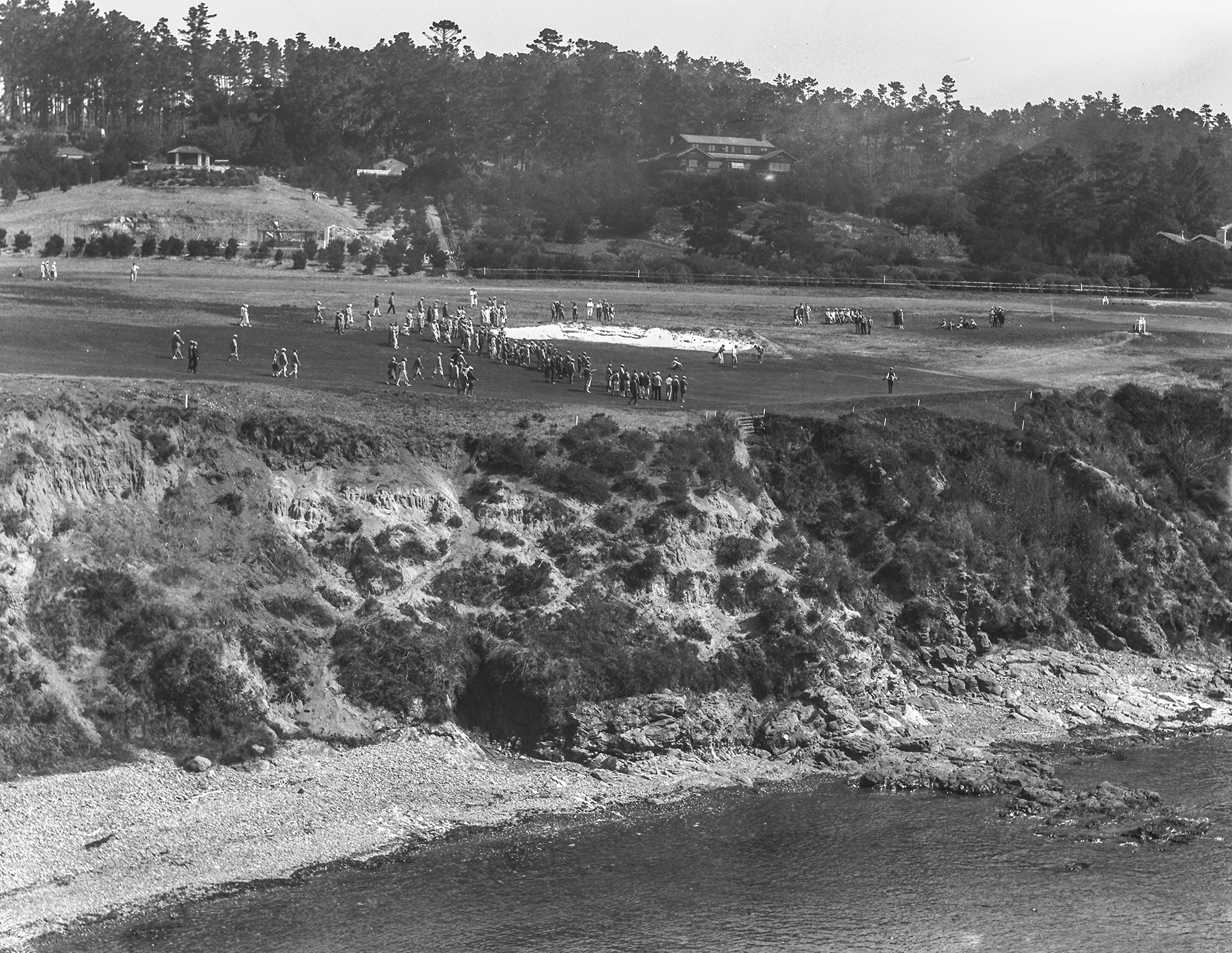
The San Francisco Chronicle listed the eighth hole as a 403-yard par-5 in 1919, giving the course a total par of 73. The early design featured a giant green and one primary bunker. Alister MacKenzie added his patented bunkering to the hole in 1926. (He also worked on the 13th hole.)
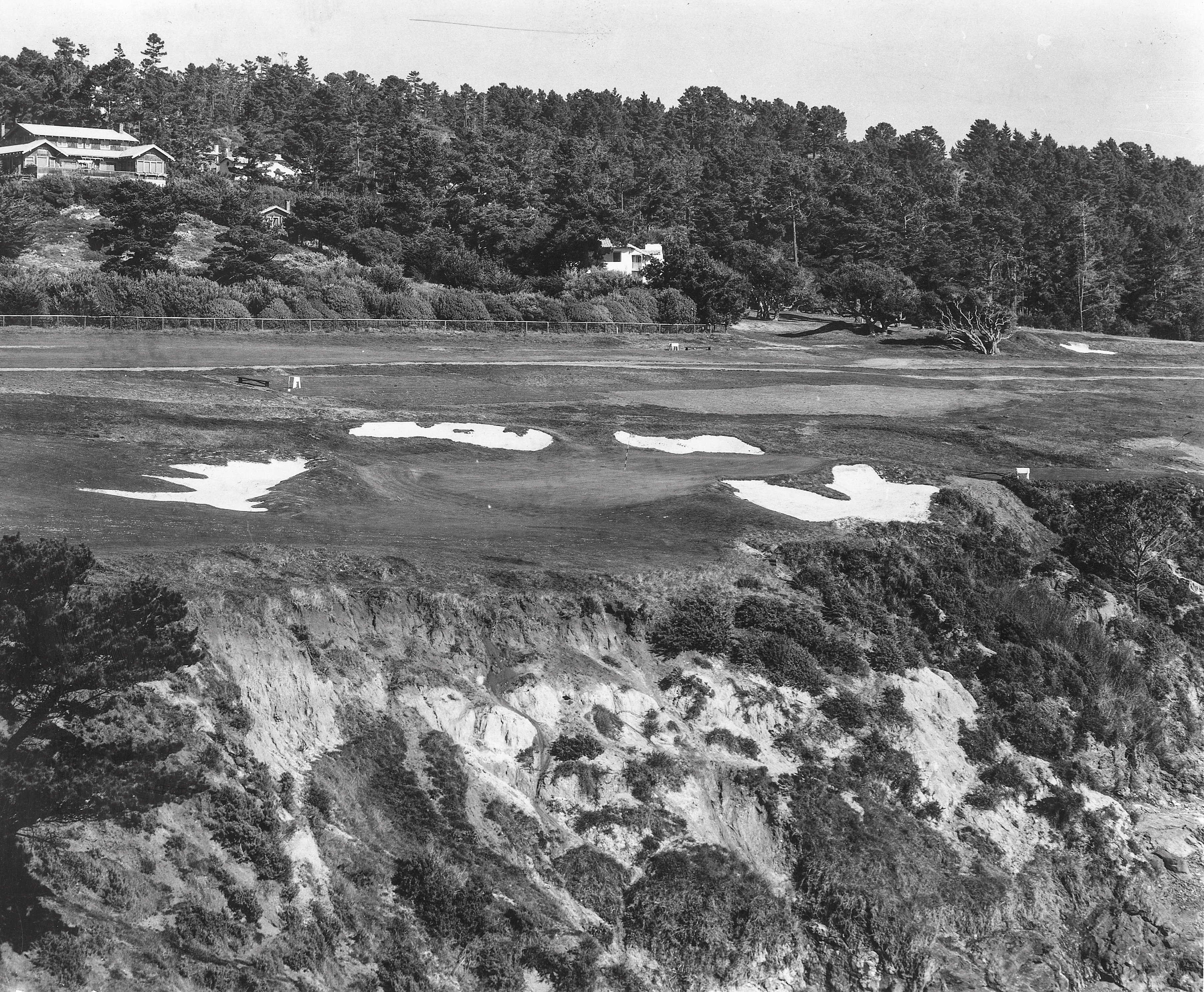
Egan enhanced the hazards again, even building a hanging bunker that cascaded down the cliff for the 1929 U.S. Amateur.

Francis Ouimet — who became the first amateur to win the U.S. Open in 1913 — found himself at the bottom of that bunker during competition:
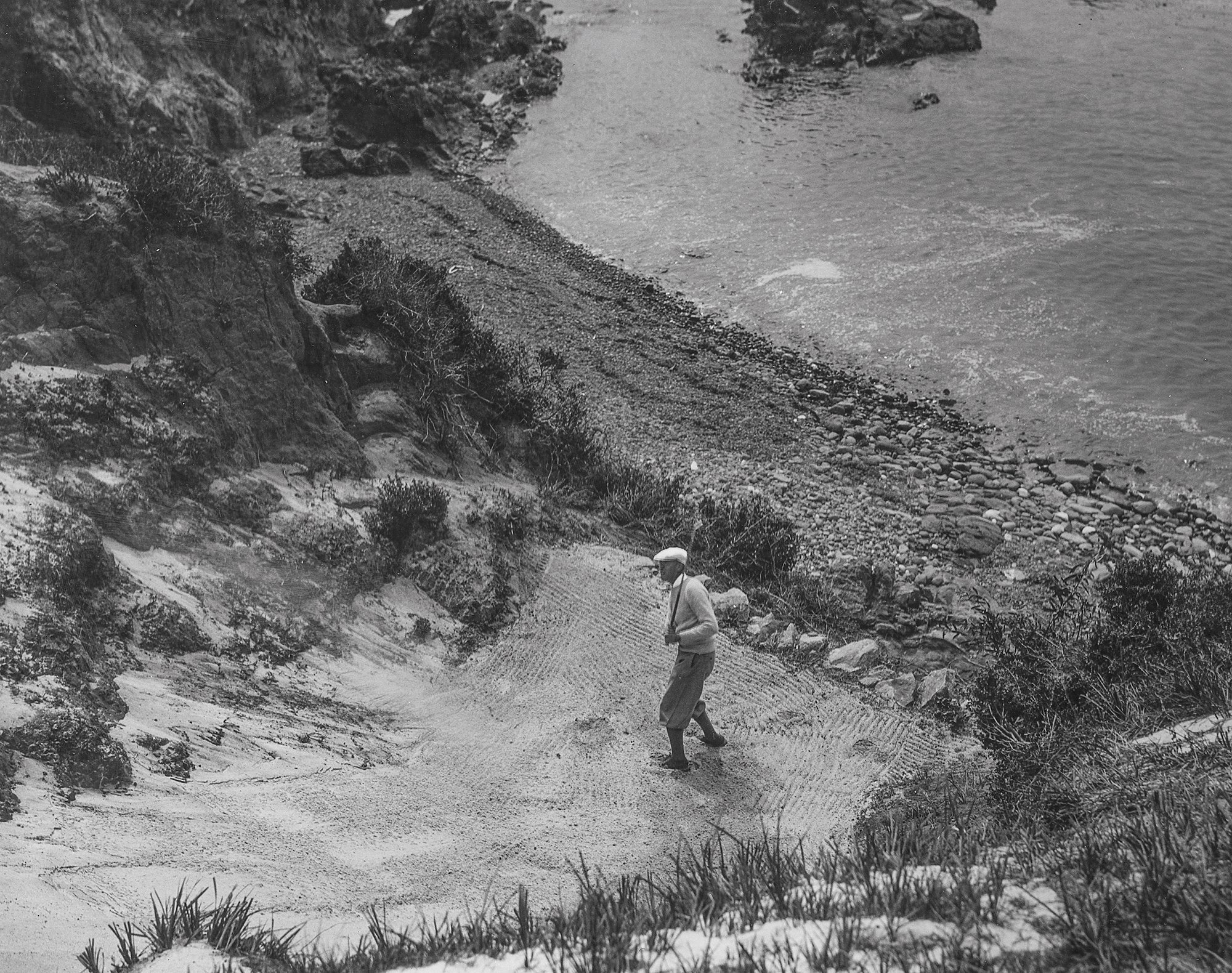
Mother Nature added to this hole during the 1962 Bing Crosby Pro-Am. Below is a snow-covered version of the eighth hole during a Monday finish. (Yes, they somehow played with that snow on the ground. Not surprisingly, the tournament winning total of 2-under 286 tied for the highest score ever. In fact, three of the five U.S. Open winners at Pebble Beach have posted better scores.)
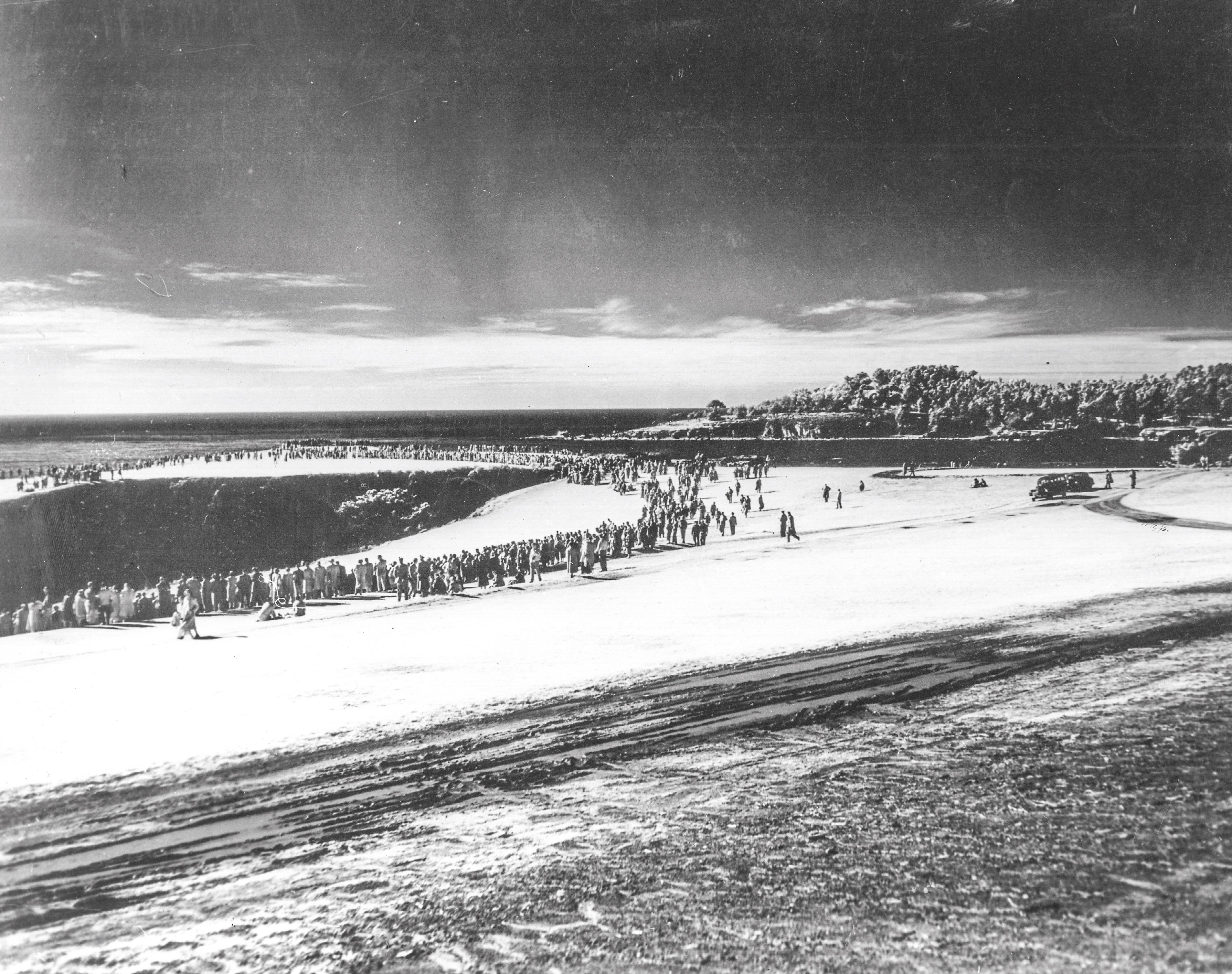
Here’s what No. 8 looks like today:
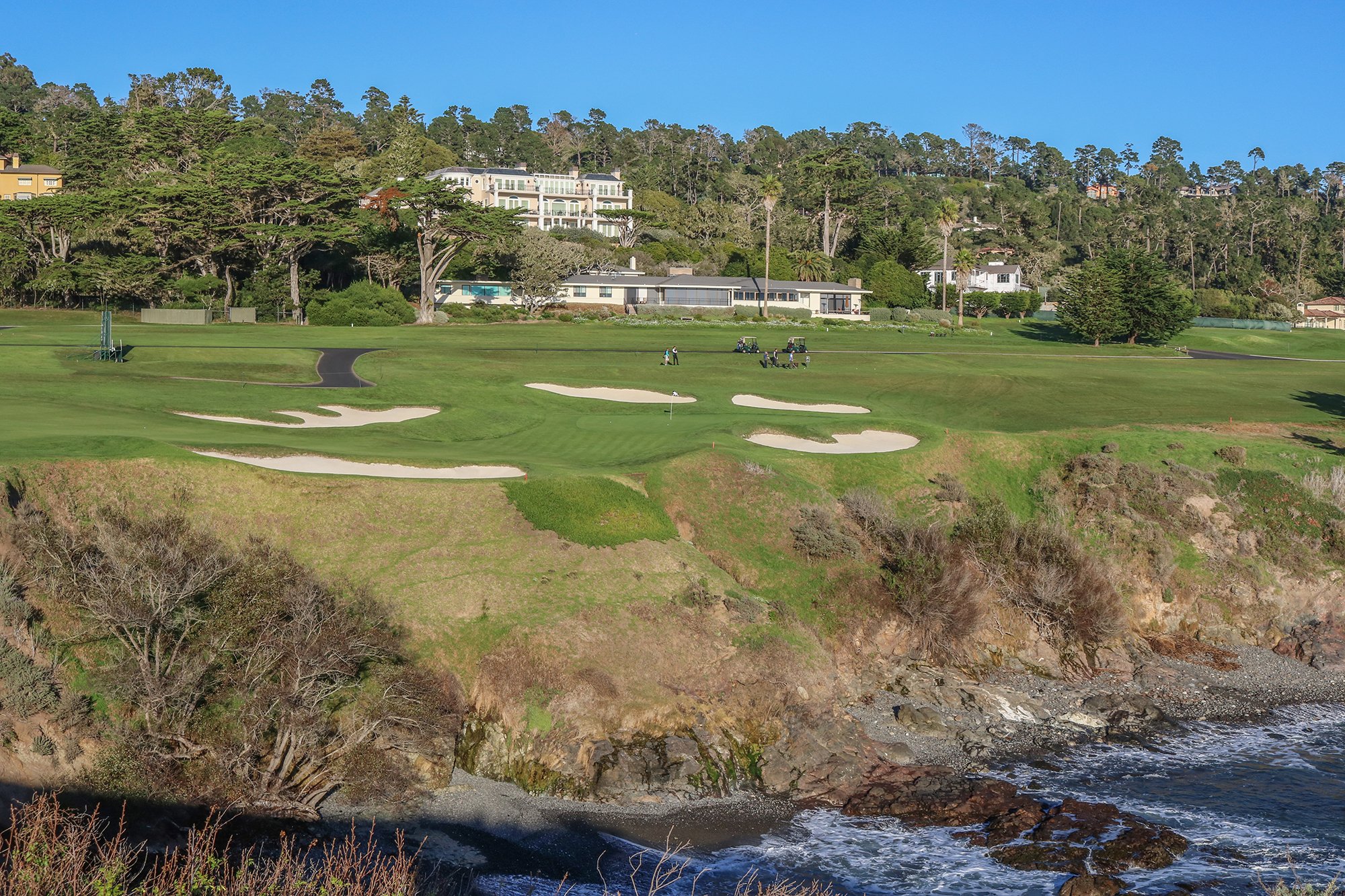
THE NINTH HOLE
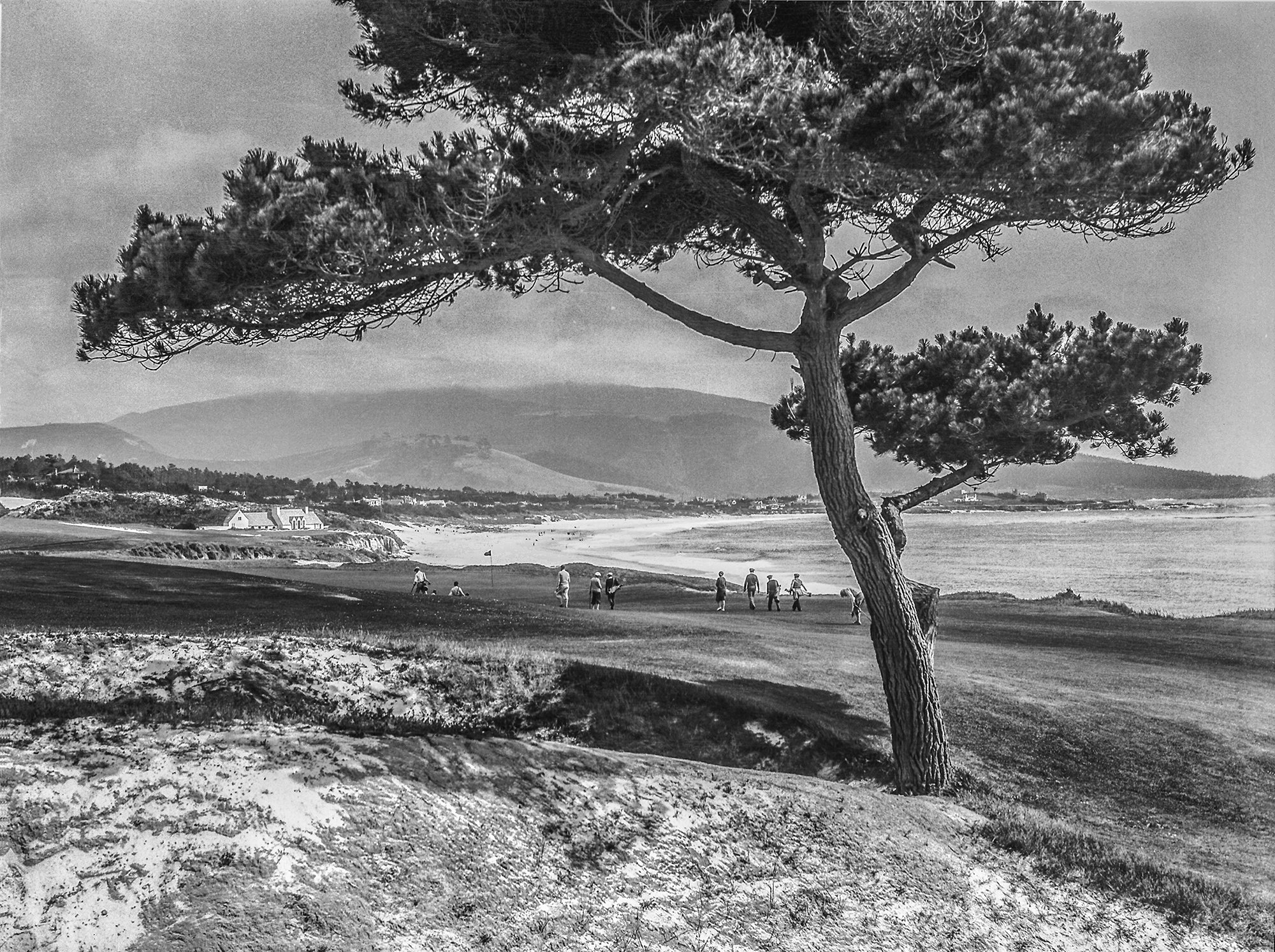
This photo was taken just in front of the original ninth green. You can see Egan’s new green, which was pushed back some 70 yards to the coastline. In the distance, you can spy some of Egan’s stylish bunkering along the 10th hole. Here’s what this view looks like today:
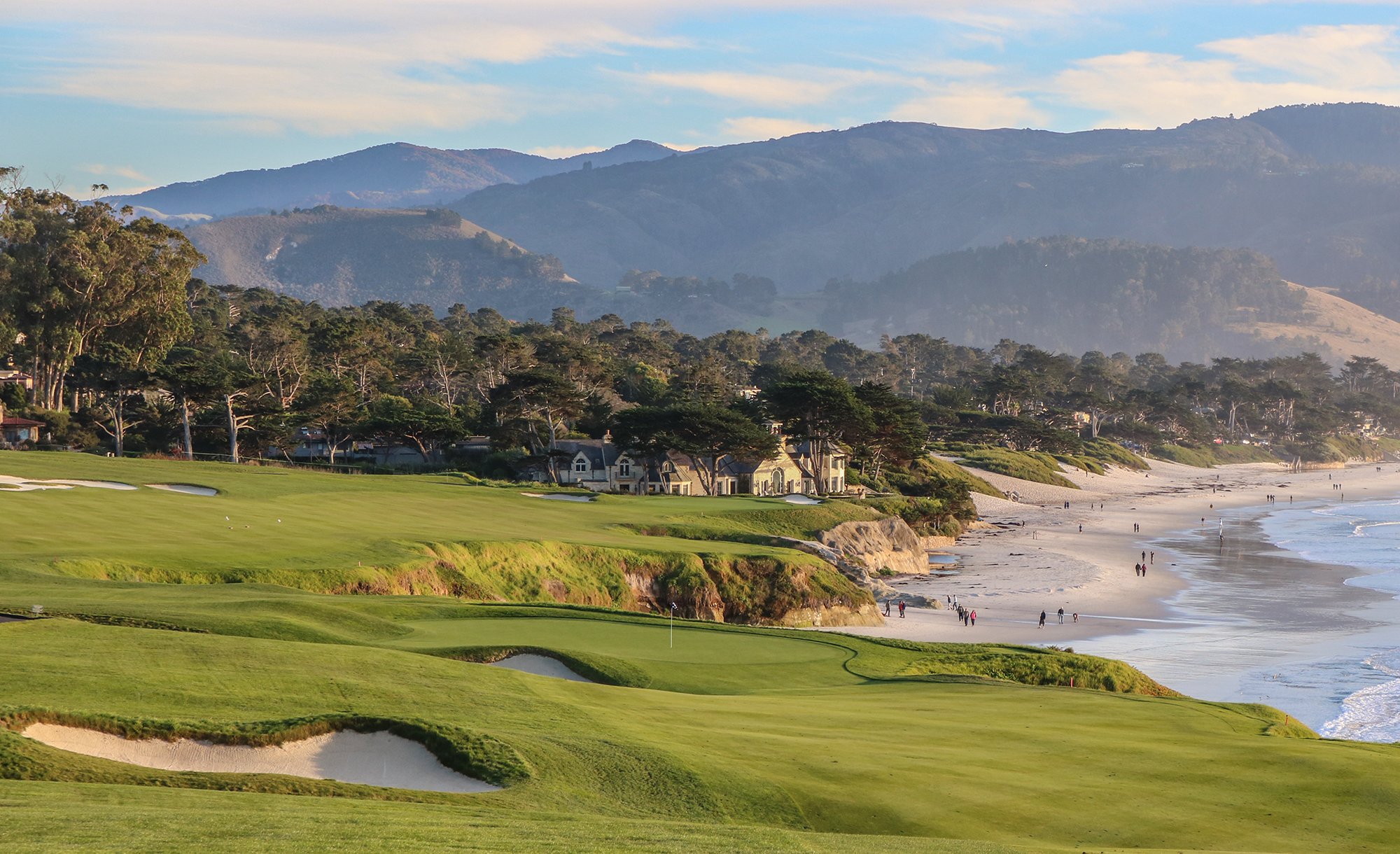
THE 13TH HOLE
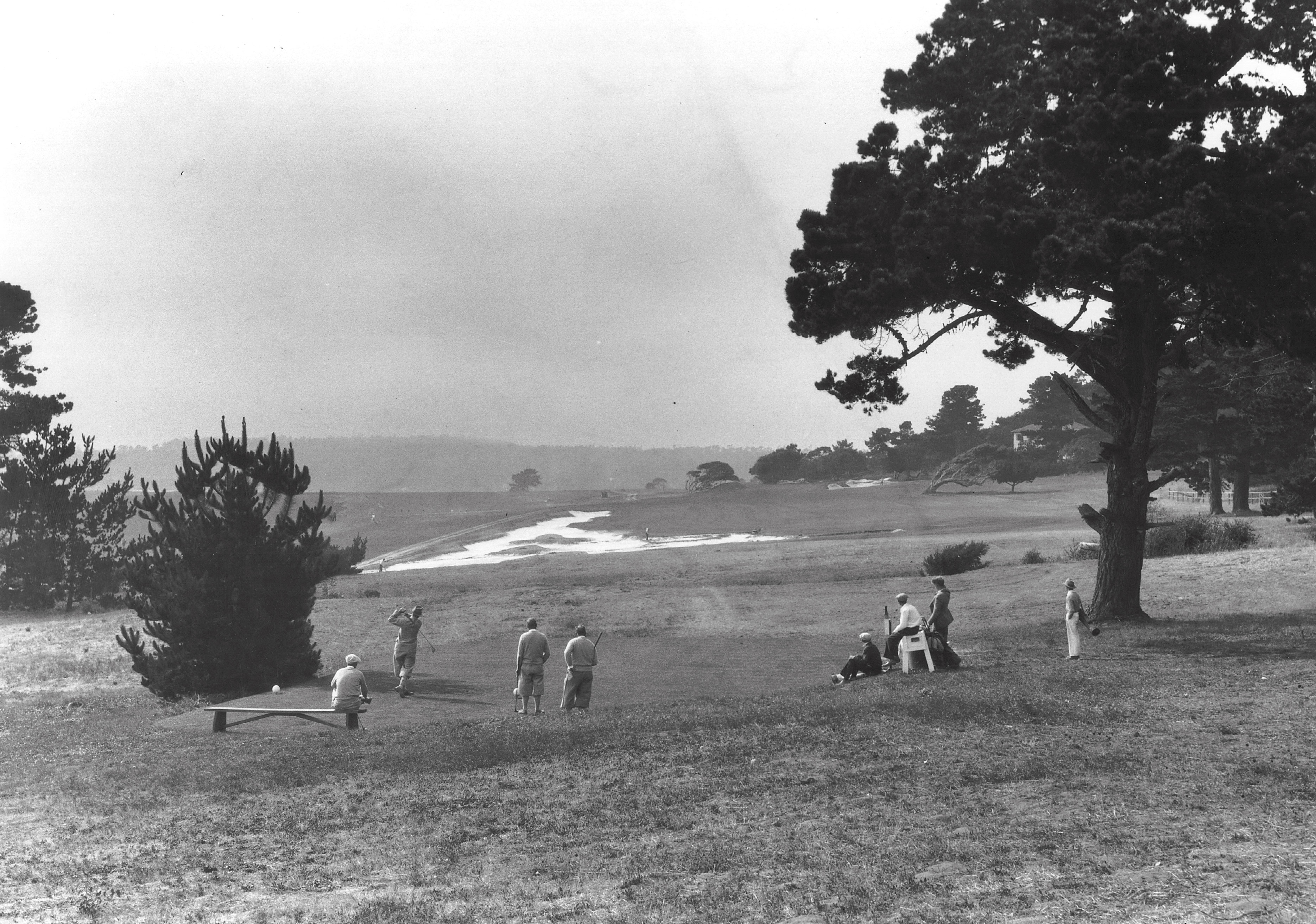
The other hole MacKenzie fixed up during his visit to Pebble Beach in 1926 was No. 13. Egan added a vast waste bunker to visually divide No. 13 from No. 9, while MacKenzie reworked the bunkering around the green:
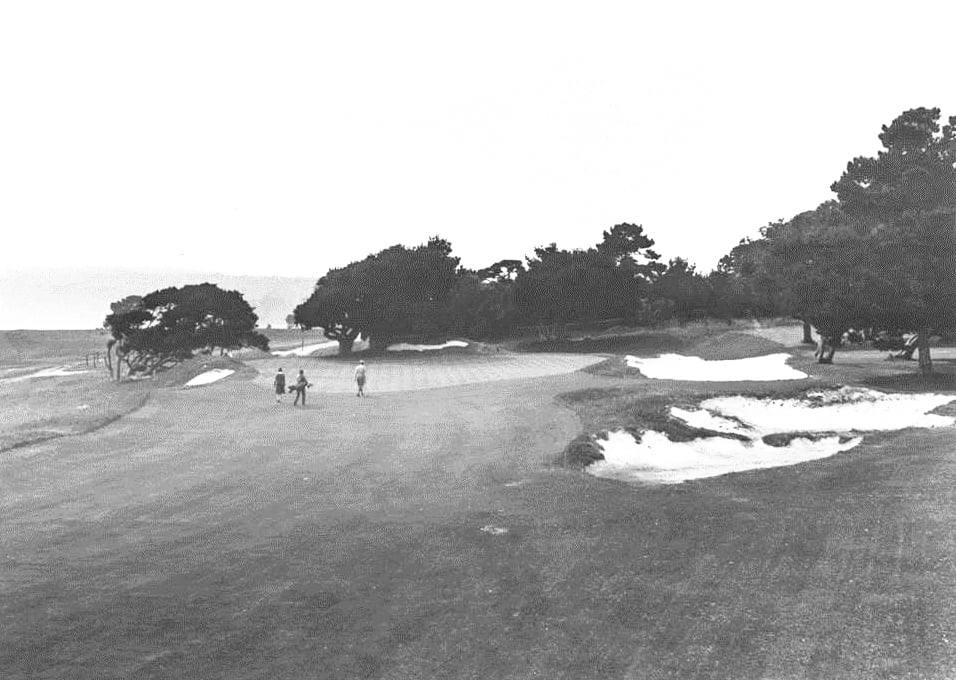
This photo was the inspiration for the reintroduction of a bunker to the left of the 13th green that had been lost over time. A bunker was added back during a green renovation in 2017.
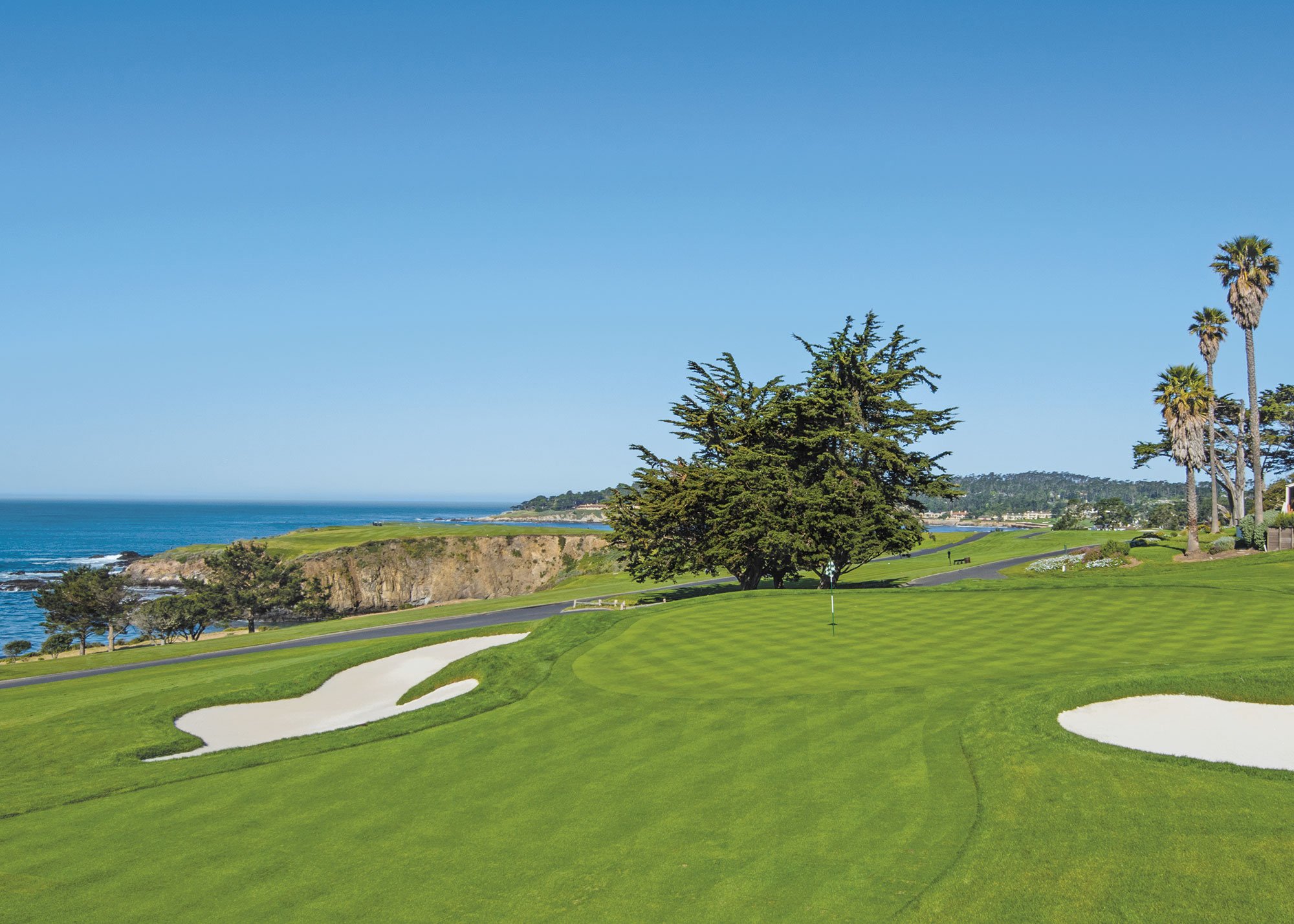
THE 14TH HOLE
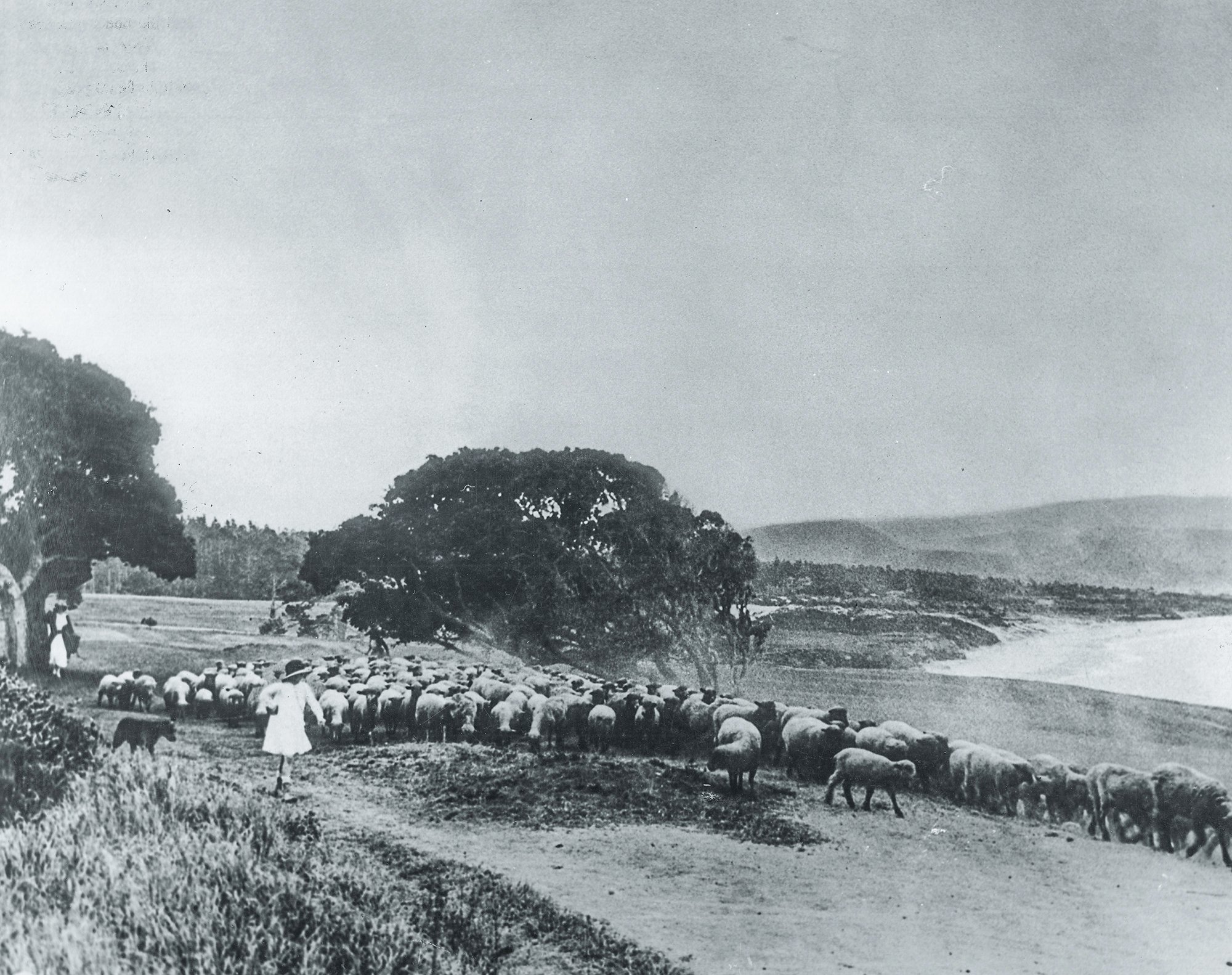
Sheep were early lawn mowers at Pebble Beach, as this photo from the 14th tee box shows. While their labor was cheap, their hoof prints were much worse than spike marks on greens. As a result, mutton and lamb chops soon became featured items on the menu at the newly opened Del Monte Lodge.
THE 17TH HOLE
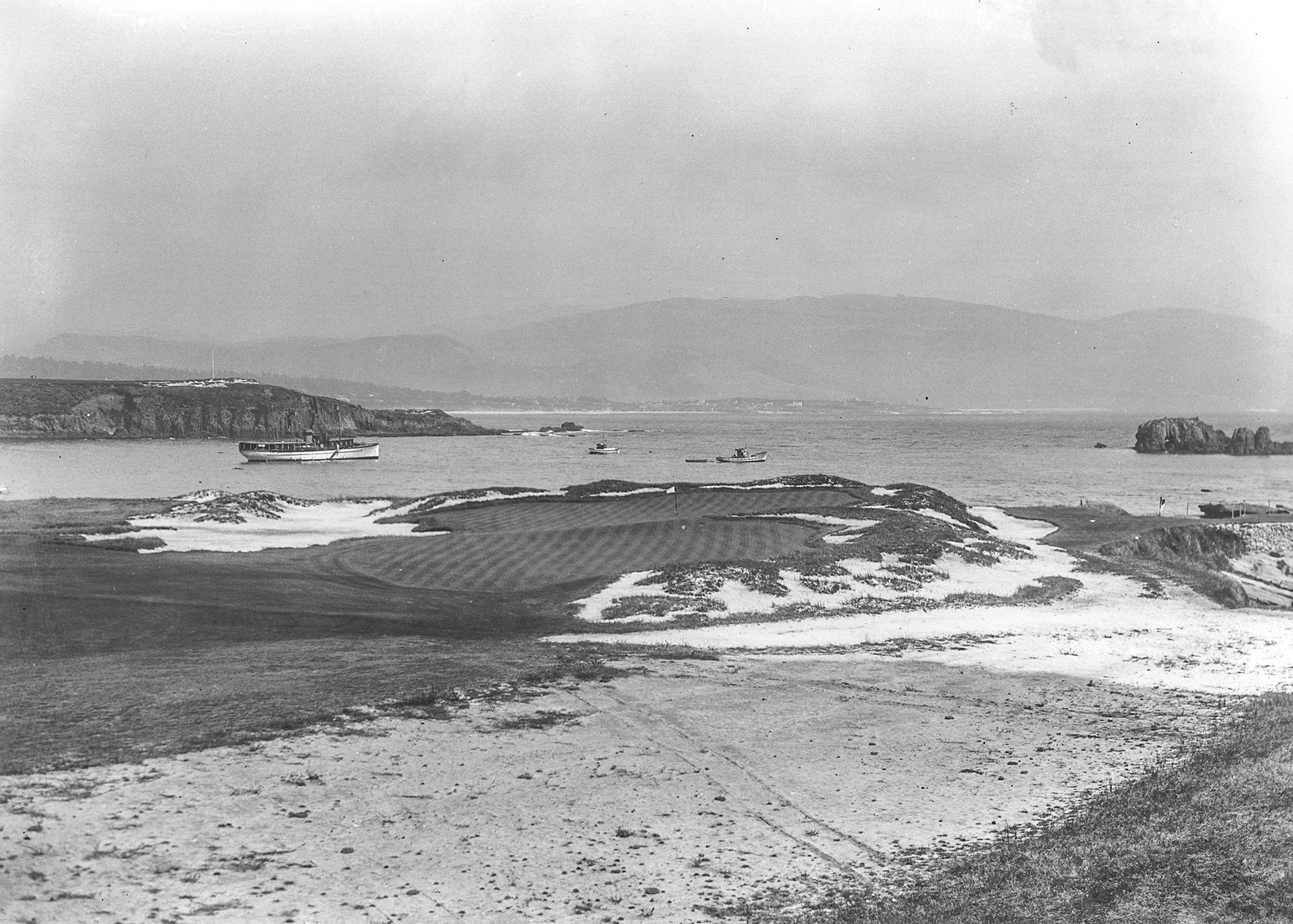
Egan is responsible for building the U.S. Open tees that are played across the road, as he described ahead of the 1929 U.S. Amateur:
“A new championship tee has been built back of the road, making a distance of 225 yards. A large double green more or less surrounded by sand dunes has been built on the site of the old green. The left, or ‘championship’ half of the green is guarded in front by sand and is separated from the other half by a long ridge. The entire green is particularly visible.”
The idea of a championship half of the green is still how the hole plays today. The traditional hole location for the final round of every U.S. Open and AT&T Pebble Beach Pro-Am is tucked on the left side of the green.
You will notice that the green has shriveled over time as 100 years of golfers have shoveled sand out of the surrounding bunkers:
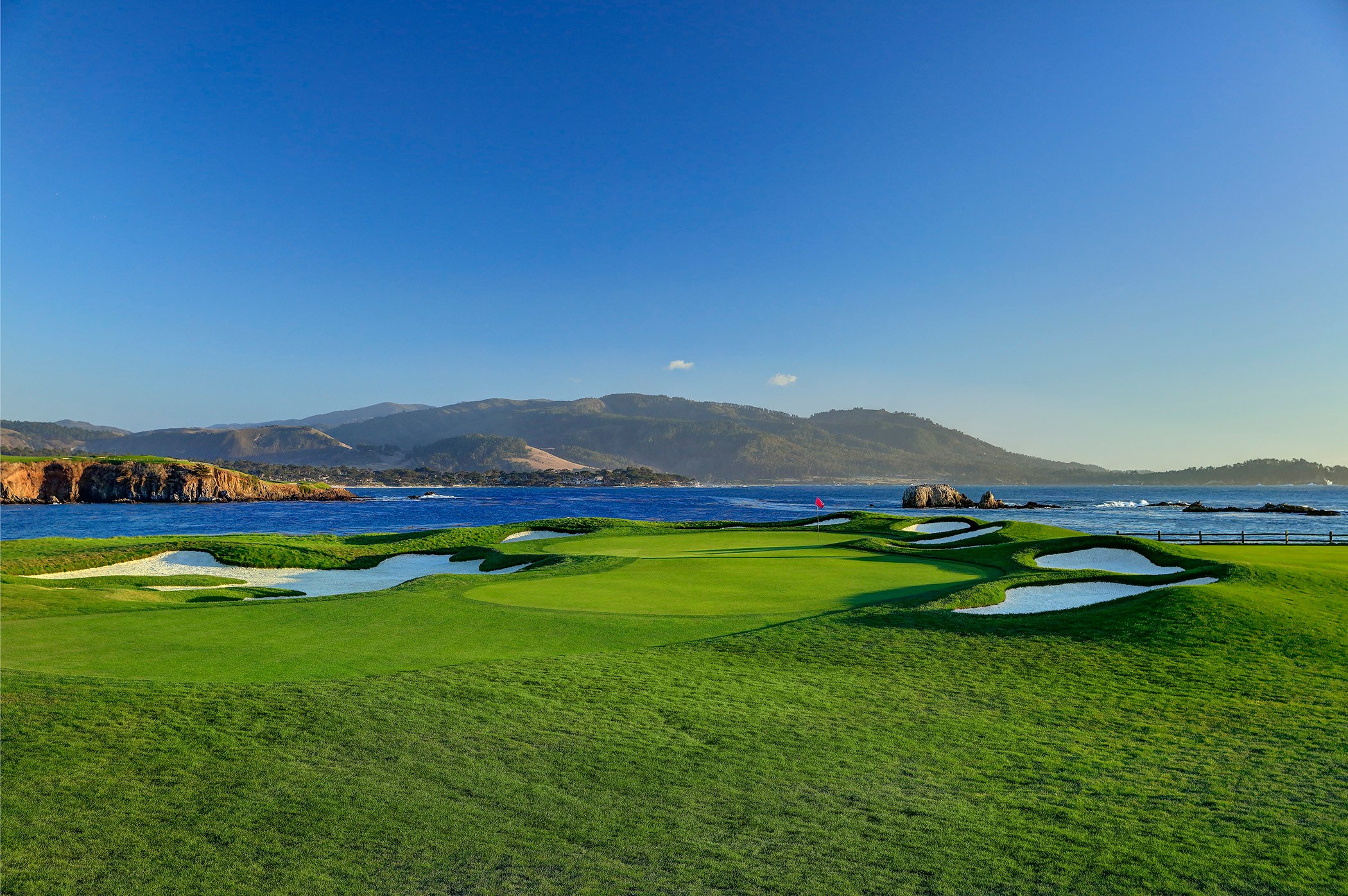
THE 18TH HOLE
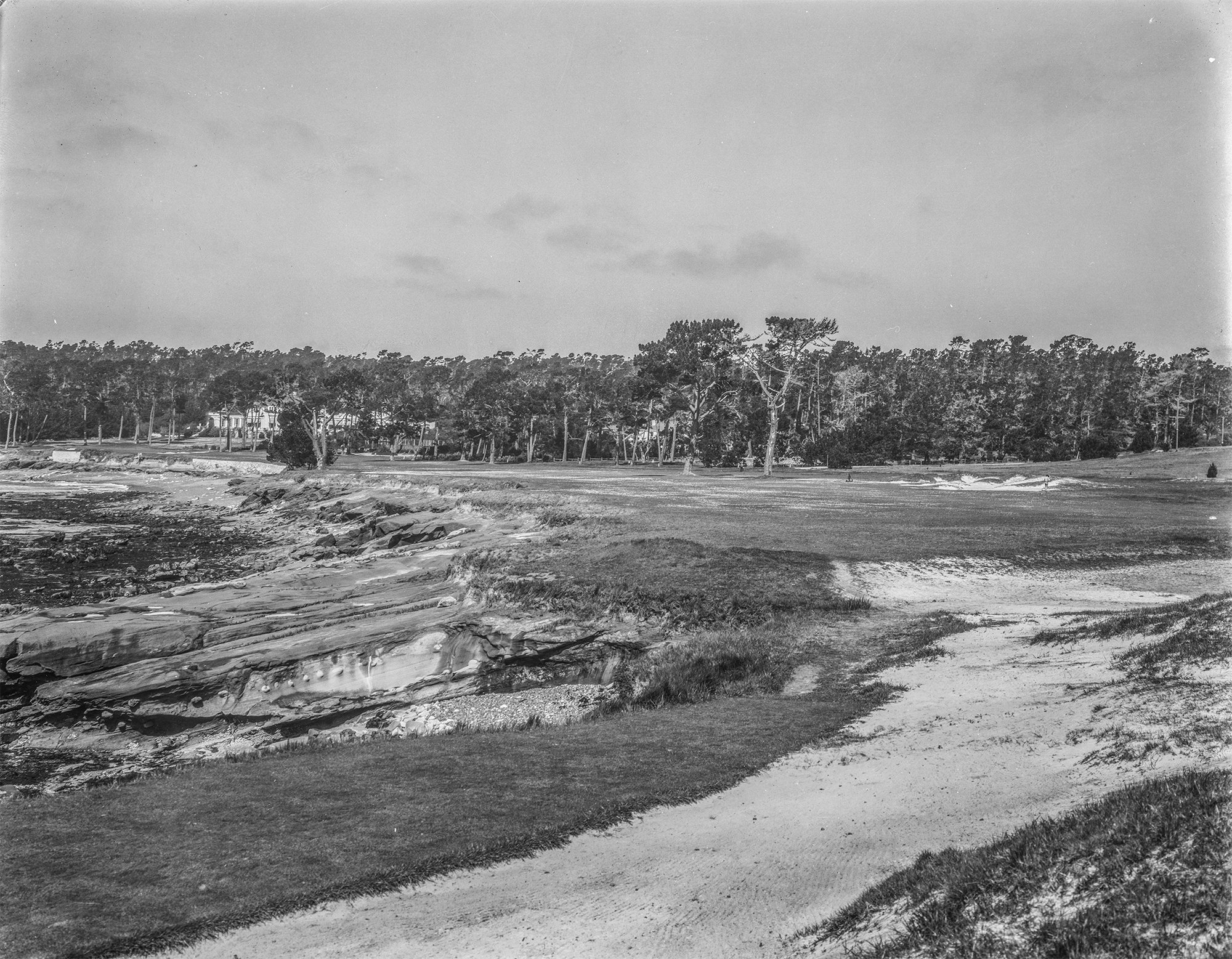
It wasn’t until the 1922 California State Amateur that the 18th hole played as a par-5. It was originally conceived as straightforward 370-yard par-4. Only after Morse sought the consult of English golf course architect Herbert Fowler was the closing hole transformed into the famous par-5 that it is today.
A few things stand out from this late-1920s photo:
- No houses line the hole
- Egan’s dunes bunkering is present to punish skittish drives to the right
- There are trees to the left of the fairway
- The actual “Pebble Beach” is visible — and playable
- The current Lodge is barely visible, tucked away in the forest
Here is Harrison Johnston playing his third shot on No. 18 from the beach during the championship match of the 1929 U.S. Amateur. Johnston made par to halve the hole, and went on to win the title.
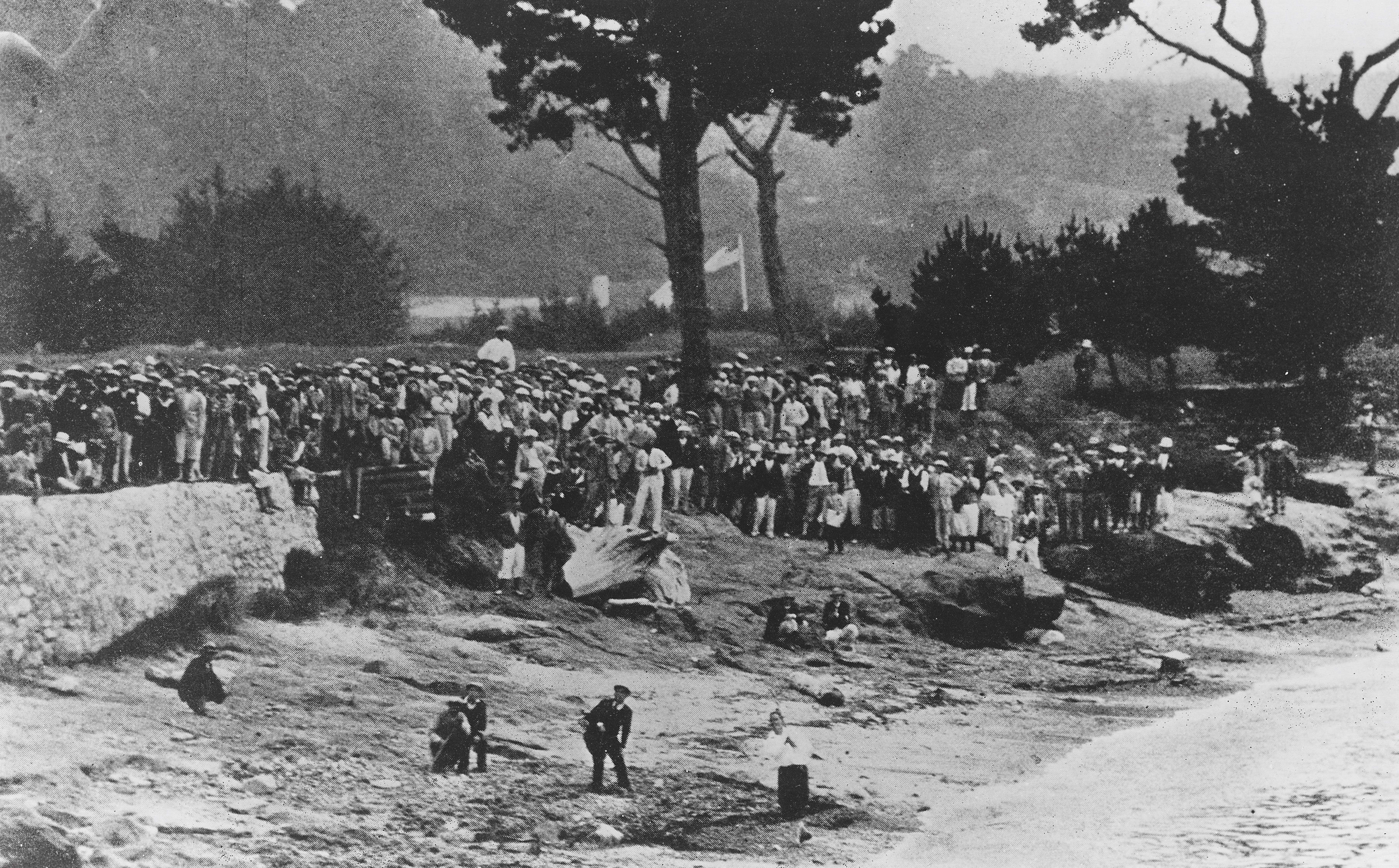
Brandt Snedeker proved that recovery is still possible in 2019!
And here is the iconic view you see from the tee today:
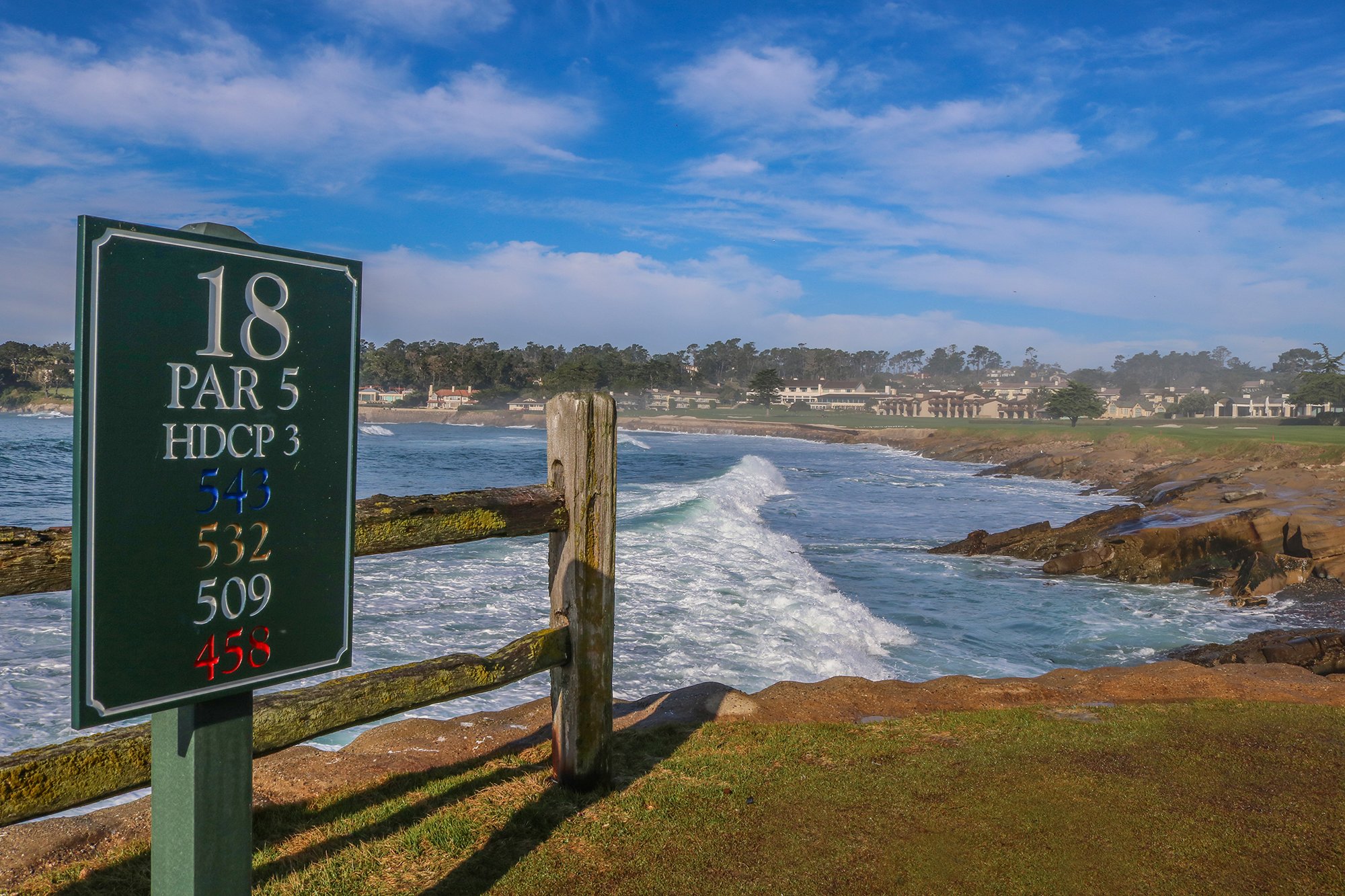
As Tiger Woods sums up: “Pebble Beach probably has the most historic and picturesque 18th hole. If anyone ever sees a photo from the 18th tee box all the way to the hole, you know what it is. People who have never played Pebble Beach know what it is.”